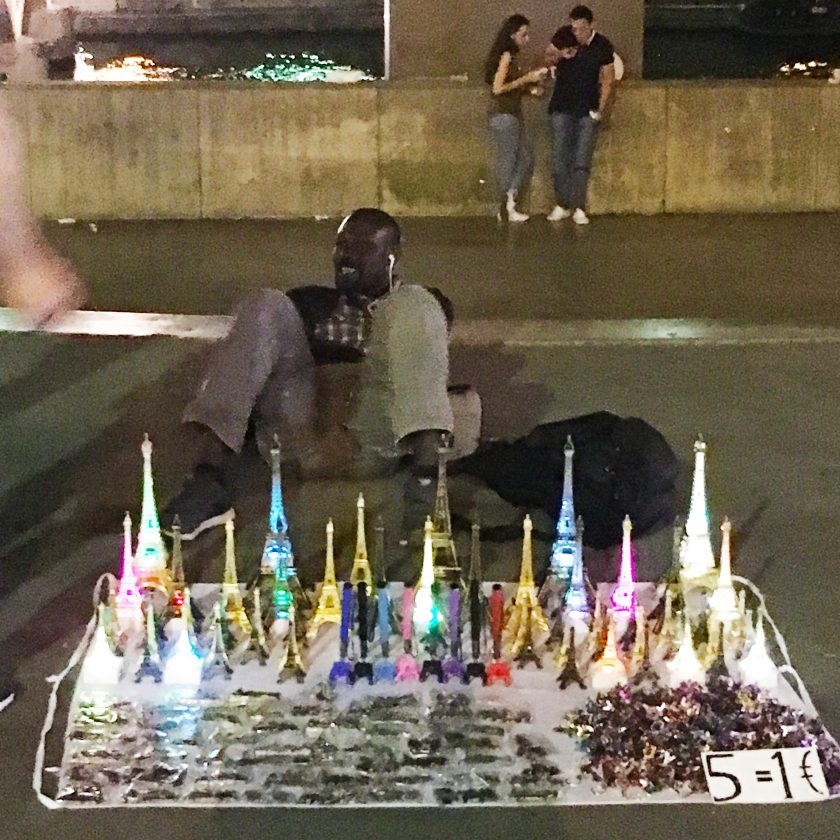 My experience of Paris this time was so different. I have no idea how I ended up wandering around with a guitar waiting for a bus at 2.30 in the morning.
My experience of Paris this time was so different. I have no idea how I ended up wandering around with a guitar waiting for a bus at 2.30 in the morning.
The day before, I had arrived at Gare du Nort from Amsterdam at 9.40pm, it was a very warm evening and I walked along the back streets to find my hostel. The Gare du Nort and the Gare de l’Est, strangely, are right beside each other in a drab part of the 10th arrondisement in north east Paris alongside the massive corridor of railway lines. I soon found myself walking past a group of about 100 North Africans sleeping and lounging on the footpath under the watchful eye of the Gendarmiere carrying their compact submachine guns. When I arrived at the Generator hostel, sweating a little, the reception guy had no greeting for me, no smile – he eyed me up and simply said, ‘Passport’. Welcome to Paris; crowded, dirty, hot and a bit edgy.
The attitude was so different from where I’d recently been. The Scandinavians and Dutch are so courteous and they all speak English, in France they will, but only if they have to. Many can’t speak English at all (and it’s not that they should, but it does says something about the French that speaking English is an option). This does not apply to people in any official capacity dealing with the public with a huge tourist population. On the other hand, for example, a woman in a supermarket working at the checkout did not attempt to speak English. I made the mistake of bringing my fruit selection up to the till where I assumed it would be weighed and priced as they did in other places I’d recently been. In France you weight them yourself and put a sticker on the bag which pops out of the scales machine. It’s all these little things that need to be explained – just once. It was explained to me very clearly and patiently, in French.
I nodded intelligently and there’s always someone around to help, usually a younger person. I just wish I had worked a little more on my French language before coming, although, the phrase, ‘You need to weigh them, press the button and a little sticker comes out that you put on the bag’, may have been a bit beyond my comprehension, anyway.
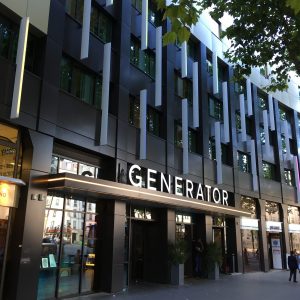
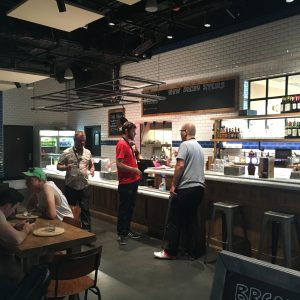
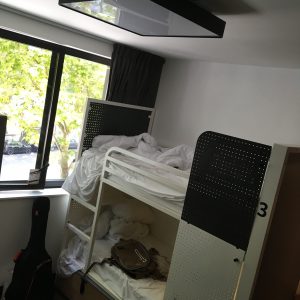 I would recommend The Generator Hostels to anyone budget travelling in Europe, they’re a new approach to hostels and more like a hotel. They cost about NZ$60 a night. The big difference between these and the usual hostels is there’s no kitchen, no self-catering, no fridges, no food to be brought into the place (but people still do, of course, and take it to their rooms. But the rooms are cleaned everyday, so they’re keeping an eye on it). There is a $NZ14 breakfast available, which is probably better value than you’d get in the local street cafés because it’s self-serve which means you can load up for later. The rooms all have ensuites and the reception areas are very modern with spacious parts set aside on the ground floor with sofas, tables and chairs to hang out with your friends. Generator Hostels are the way of the future I think, they’re all over Europe, referred to as Designer Hostels. The wifi reception is strong everywhere and good in all the rooms – and there’s no password. My room had 3 other women already asleep in the room. There seems to be so many women travelling now, not just as couples but many solo and in pairs, and completely comfortable staying in mixed dorms that they can opt for and get slightly cheaper than a women’s dorm.
I would recommend The Generator Hostels to anyone budget travelling in Europe, they’re a new approach to hostels and more like a hotel. They cost about NZ$60 a night. The big difference between these and the usual hostels is there’s no kitchen, no self-catering, no fridges, no food to be brought into the place (but people still do, of course, and take it to their rooms. But the rooms are cleaned everyday, so they’re keeping an eye on it). There is a $NZ14 breakfast available, which is probably better value than you’d get in the local street cafés because it’s self-serve which means you can load up for later. The rooms all have ensuites and the reception areas are very modern with spacious parts set aside on the ground floor with sofas, tables and chairs to hang out with your friends. Generator Hostels are the way of the future I think, they’re all over Europe, referred to as Designer Hostels. The wifi reception is strong everywhere and good in all the rooms – and there’s no password. My room had 3 other women already asleep in the room. There seems to be so many women travelling now, not just as couples but many solo and in pairs, and completely comfortable staying in mixed dorms that they can opt for and get slightly cheaper than a women’s dorm.
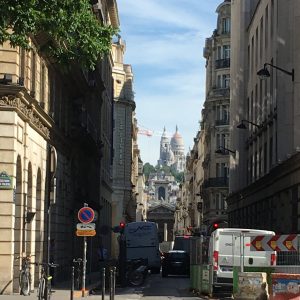 I was up and away at 8am before any of my room mates were awake and had a basic plan for the day. First, the nearby Sacre-Coeur for the big view, St Germaine-des-Pres for the street culture, Musée d’Orsay for some art, and to stand beneath the Tour Eiffel. But it didn’t go to plan. I must have taken the wrong streets up to the Basilique. I was wanting some breakfast but the streets were all just drab and faceless apartments – where were the quaint cafés with guys wearing Ray Ban Wayfarers and elegant women wafting perfume walking with poodles that I remembered from 20 years ago?
I was up and away at 8am before any of my room mates were awake and had a basic plan for the day. First, the nearby Sacre-Coeur for the big view, St Germaine-des-Pres for the street culture, Musée d’Orsay for some art, and to stand beneath the Tour Eiffel. But it didn’t go to plan. I must have taken the wrong streets up to the Basilique. I was wanting some breakfast but the streets were all just drab and faceless apartments – where were the quaint cafés with guys wearing Ray Ban Wayfarers and elegant women wafting perfume walking with poodles that I remembered from 20 years ago?
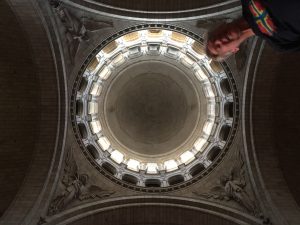
 When I got there I was disappointed I couldn’t walk all the way around the Sacre-Coeur, it’s all gated and locked off, and the only big view available from the front steps didn’t include the Tour Eiffel! What’s the point of taking a photo of the Paris skyline from the top of a hill if you can’t get the Eiffel Tower in it! – ha ha <-;
When I got there I was disappointed I couldn’t walk all the way around the Sacre-Coeur, it’s all gated and locked off, and the only big view available from the front steps didn’t include the Tour Eiffel! What’s the point of taking a photo of the Paris skyline from the top of a hill if you can’t get the Eiffel Tower in it! – ha ha <-;
The cafés I did come across walking up the hill looked a bit tired and were empty – maybe it was still too early. I noticed how the advertised price for a croissant and coffee kept increasing the higher up I walked, and NZ$18 was getting a bit much and I couldn’t really go back down to the cheaper ones so I have up on the idea of breakfast and would wait until I found a place on my way down.
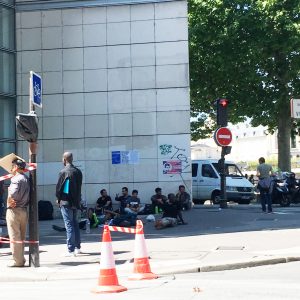 Everywhere I went I was searched by security, everyone was, even entering a canal swimming la plage area. Anyway, I sat inside the Basilique and had some snacks and water from my pack looking up at the dome. All the little gates around the pews were locked up, why so many locks everywhere? Twenty years ago I was in awe of the power expressed in the art and architecture of the Roman Catholics – but now, to me it looks different; the biggest and most elaborate con-job in history; cruelty, subjugation, exploitation and the repression of women and science, a relic of the dark ages, and still today expressing it’s medieval mumbo jumbo.
Everywhere I went I was searched by security, everyone was, even entering a canal swimming la plage area. Anyway, I sat inside the Basilique and had some snacks and water from my pack looking up at the dome. All the little gates around the pews were locked up, why so many locks everywhere? Twenty years ago I was in awe of the power expressed in the art and architecture of the Roman Catholics – but now, to me it looks different; the biggest and most elaborate con-job in history; cruelty, subjugation, exploitation and the repression of women and science, a relic of the dark ages, and still today expressing it’s medieval mumbo jumbo.
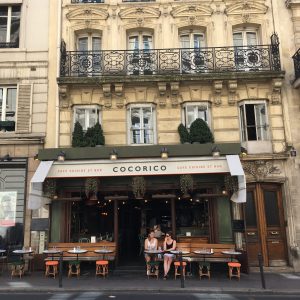 So interesting going on the Metro again, I was amazed they still had the same system with the little paper tickets – I bought the 10 pack, as you do, and watched young guys jump over the turnstyles. I wondered at what age a bloke gives up doing that little athletic move. Other guys enter using the exit gate by reaching their hand around and pressing the button to open it. No wonder they have the Oyster card system in London.
So interesting going on the Metro again, I was amazed they still had the same system with the little paper tickets – I bought the 10 pack, as you do, and watched young guys jump over the turnstyles. I wondered at what age a bloke gives up doing that little athletic move. Other guys enter using the exit gate by reaching their hand around and pressing the button to open it. No wonder they have the Oyster card system in London.
Musée d’Orsay was shut on Monday, so onward to St Germaine. The streets are all so long and there seemed to be so much construction and whole blocks are fenced off. I couldn’t seem to find what I was looking for – so much walking.
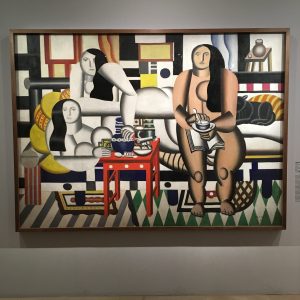 I chanced upon a small art gallery, the Musée Maillol with works by Leger, Picasso, Braque, Pissaro and Sisley – my favourite period of French art, roughly 1890-1920. It was creeping up to 34º and after the gallery I sat at a cafe had a coffee and chatted with the woman opposite me who suggested I go to the Rodin Garden nearby. I was thinking it might be a nice place to have a quiet nap under the trees, – but of course, it was shut on Monday.
I chanced upon a small art gallery, the Musée Maillol with works by Leger, Picasso, Braque, Pissaro and Sisley – my favourite period of French art, roughly 1890-1920. It was creeping up to 34º and after the gallery I sat at a cafe had a coffee and chatted with the woman opposite me who suggested I go to the Rodin Garden nearby. I was thinking it might be a nice place to have a quiet nap under the trees, – but of course, it was shut on Monday.
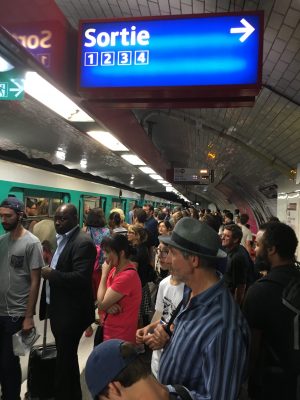 Later, I returned to the hostel, the subway was getting really hot and crowded by now and I needed a break. The room was empty and I slept and showered and headed out again with my guitar to an open-mic night on the other side of Paris. When I finally got there the bar manager shrugged his shoulders – there’s was nothing going on. According to my Google search there are plenty on Tuesday and Wednesday night, of course – but only one on Lundi and that wasn’t happening.
Later, I returned to the hostel, the subway was getting really hot and crowded by now and I needed a break. The room was empty and I slept and showered and headed out again with my guitar to an open-mic night on the other side of Paris. When I finally got there the bar manager shrugged his shoulders – there’s was nothing going on. According to my Google search there are plenty on Tuesday and Wednesday night, of course – but only one on Lundi and that wasn’t happening.
I still wanted to get up close to the Tour Eiffel, so more Metro and walking the long boulevards. It was nearing midnight and the place was really crowded and the air so humid. The tower was blocked off with temporary high-fencing and armed guards were all around it. Such a shame, so much has changed because of the Islamic attacks, it seems like the city is now in a permanent kind of low-level, lock-down mode – they’re not taking any chances. Paris seems to be full of people who look like they aren’t there for the cafés and the culture – they’re just milling around, looking a bit out of place . . nothing to do, just looking . . looking at you, trying to sell you a souvenir with a flashing light.
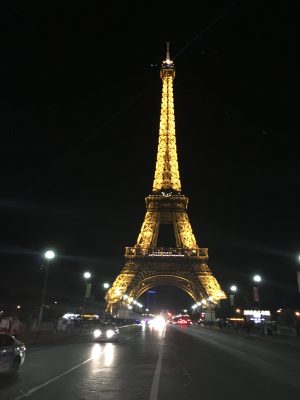 The Tour Eiffel looks magnificent when up close, something I never did before. I came towards it from the 16th, west of the Seine across the Pont d’ Lena bridge to the 7th, unfortunately the gardens, the Parc du Champde Mars, wre fenced off. The Metro had stopped, the buses were few and far between, I waited nearly an hour and took a bus all the way across Paris (where would I be without Google maps with bus timetables). I finished the last part of my journey to the hostel with a $12 taxi – the only one I have taken so far on this trip. I didn’t feel all that concerned out late at night, I just figured another 2km walk down these streets holding an iPhone for the map with drunken kids and homeless people sleeping here and there, was just too much.
The Tour Eiffel looks magnificent when up close, something I never did before. I came towards it from the 16th, west of the Seine across the Pont d’ Lena bridge to the 7th, unfortunately the gardens, the Parc du Champde Mars, wre fenced off. The Metro had stopped, the buses were few and far between, I waited nearly an hour and took a bus all the way across Paris (where would I be without Google maps with bus timetables). I finished the last part of my journey to the hostel with a $12 taxi – the only one I have taken so far on this trip. I didn’t feel all that concerned out late at night, I just figured another 2km walk down these streets holding an iPhone for the map with drunken kids and homeless people sleeping here and there, was just too much.
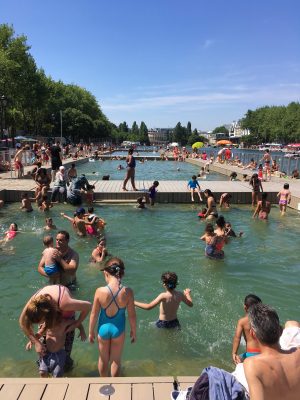 That was my day in Paris and the best part was meeting the woman at the table in the café who showed me two of her favourite small hidden public gardens nearby, they would have been convent cloisters, I think, they all had fruit trees and vegetable patches. It was nice walking with someone else for a change without having to hold my phone – to just chat away and be shown around a bit. I knew Paris in mid-July was never going to be a great idea and I was glad my plans had only allowed one full day. I was looking forward to getting into the countryside. My accomodation there had a pool and I was really, really looking forward to that pool.
That was my day in Paris and the best part was meeting the woman at the table in the café who showed me two of her favourite small hidden public gardens nearby, they would have been convent cloisters, I think, they all had fruit trees and vegetable patches. It was nice walking with someone else for a change without having to hold my phone – to just chat away and be shown around a bit. I knew Paris in mid-July was never going to be a great idea and I was glad my plans had only allowed one full day. I was looking forward to getting into the countryside. My accomodation there had a pool and I was really, really looking forward to that pool.
At the moment I’m sitting in a gypsy caravan with that pool outside. I have a brew of coffee going, there’s goodies from the local village boulangerie and patiserrie and I’m listening to RNZ. I’m using the hotspot from my phone on a signal that comes and goes from one dot to three dots out of five. Tomorrow I go to Vienna. It took me hours to figure out how to get there. Originally, I was planning to take a train from nearby Lyon but it takes 13 hours and goes via Frankfurt in north Germany, unbelievable. I considered numerous options, nearly did my head in, it’s like a game of chess.
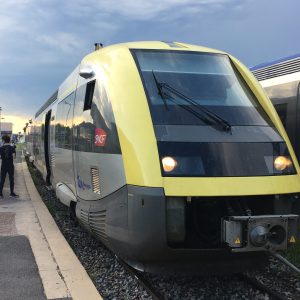 My journey involves a bus to Roanne, a train to Lyon, the TGV to Paris Charles de Galle, and a flight, and I needed to co-ordinate all those journey times. And of course I was looking for all the cheapest variables. There were no direct flights from Lyon to Vienna either, only ones going via other places and taking 10 hours. It may have been better to hire a car from Lyon to Vienna, I don’t know, but that would result in a different set of costs and issues – and might take two days. The only decent wifi I could do all this research was at the Office d’ Tourisime in the local village of Marcigny. It took me such a long time and they needed to close at 6pm but I continued outside sitting on the step.
My journey involves a bus to Roanne, a train to Lyon, the TGV to Paris Charles de Galle, and a flight, and I needed to co-ordinate all those journey times. And of course I was looking for all the cheapest variables. There were no direct flights from Lyon to Vienna either, only ones going via other places and taking 10 hours. It may have been better to hire a car from Lyon to Vienna, I don’t know, but that would result in a different set of costs and issues – and might take two days. The only decent wifi I could do all this research was at the Office d’ Tourisime in the local village of Marcigny. It took me such a long time and they needed to close at 6pm but I continued outside sitting on the step.
Again, my apologies for the poor grammar and spelling, will tidy up later.
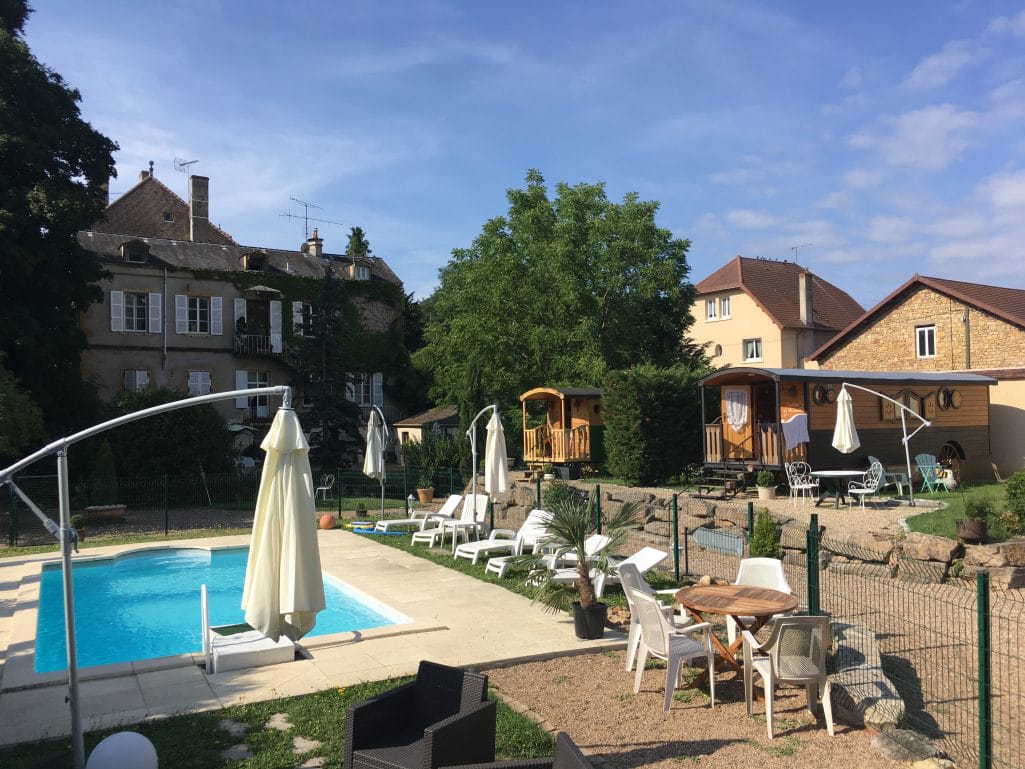
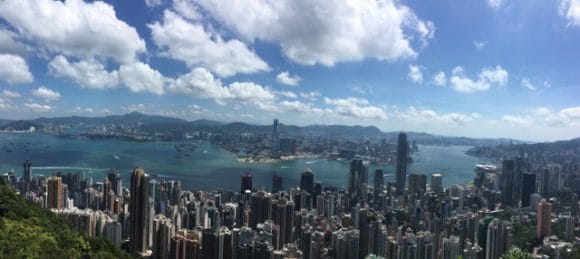
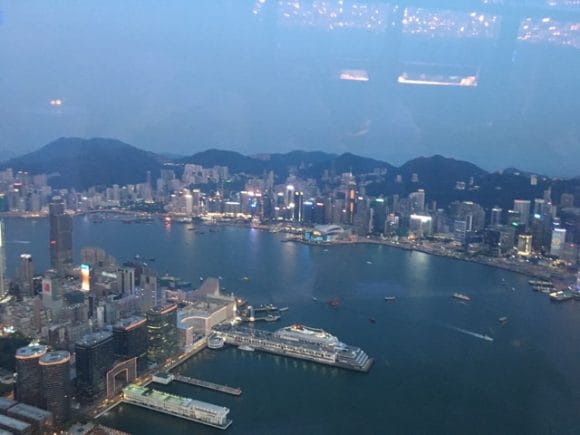
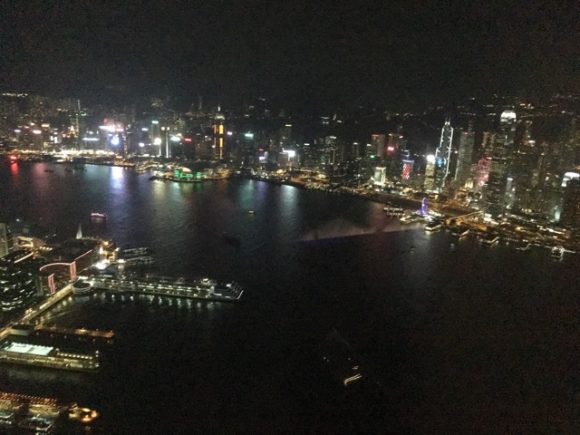
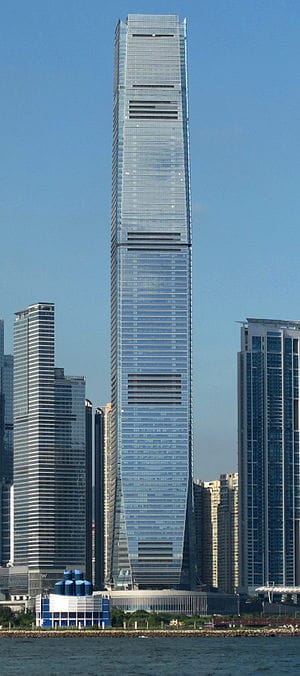
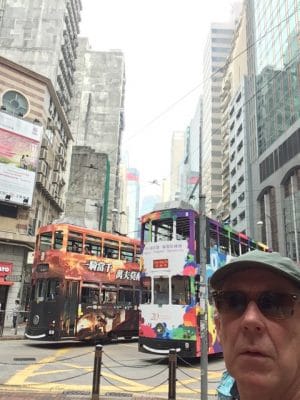
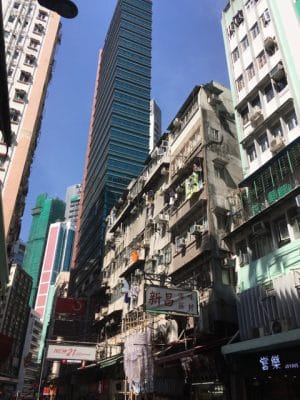
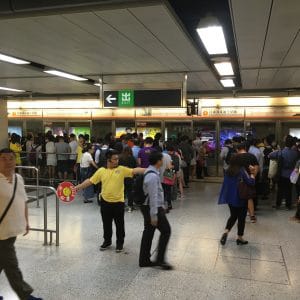
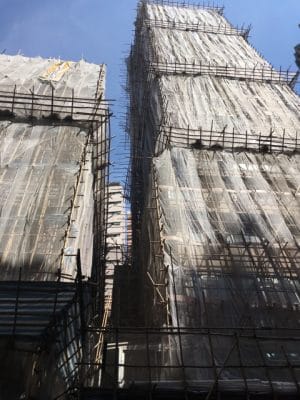
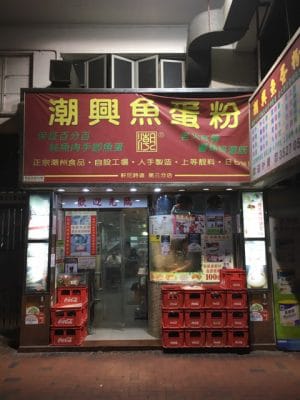
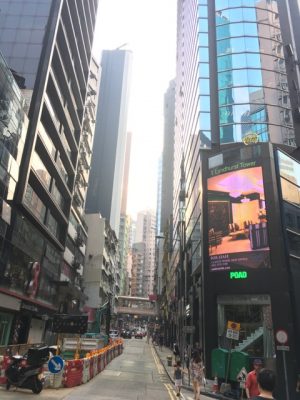
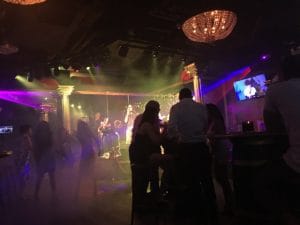

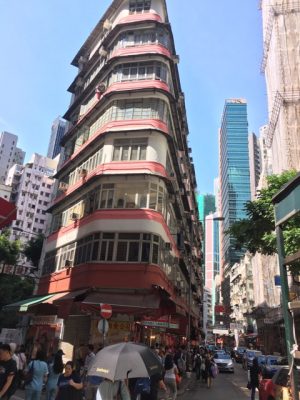
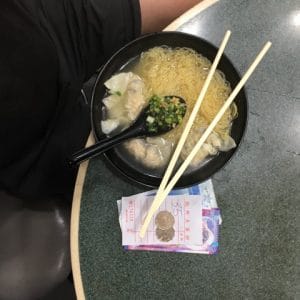
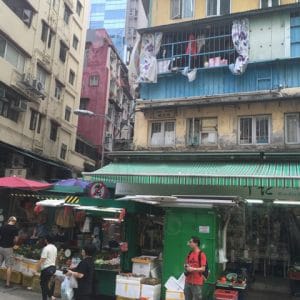
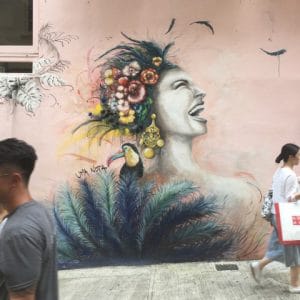
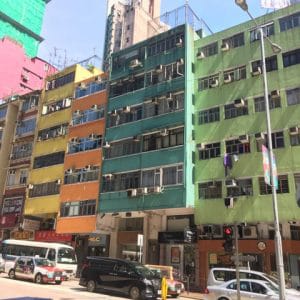
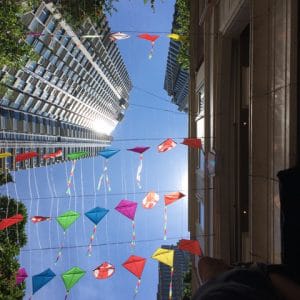
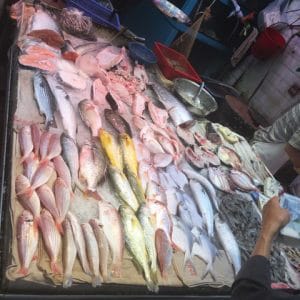
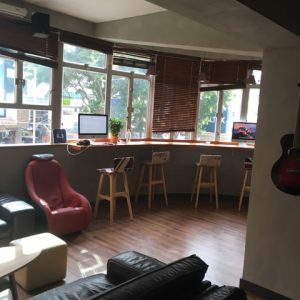
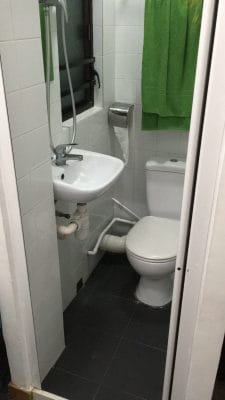
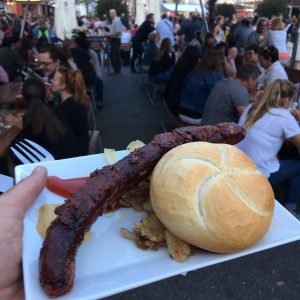
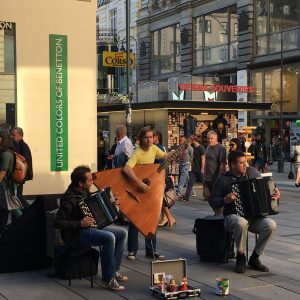



 After three full days in Vienna I got my bearings and some kind of feeling for the city. It’s quite dignified with less of the exuberance of the other cities I visited. It feels very safe and somewhat serious in a way. No citizen of Vienna will ever forget it was the place that Mozart, Strauss and Beethoven produced their masterpieces – the reminders are everywhere, gold statues, gold theatres and even the buskers on the streets play classical music.
After three full days in Vienna I got my bearings and some kind of feeling for the city. It’s quite dignified with less of the exuberance of the other cities I visited. It feels very safe and somewhat serious in a way. No citizen of Vienna will ever forget it was the place that Mozart, Strauss and Beethoven produced their masterpieces – the reminders are everywhere, gold statues, gold theatres and even the buskers on the streets play classical music.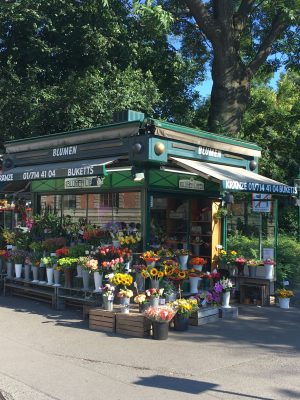
 I found SingSing the best vinyl record store so far with some incredible collectables. For example, an LP from 1964 of Janis Joplin singing in folk clubs – and, the first Beatles album, Meet The Beatles, a European pressing, not Parlophone, selling for 90E. Then down an alley with a canopy of green vegetation I found some restaurants I’d love to go to if in Vienna again – one I recognised from in a guide I read called La Boheme. I also found a few music venues where I could have played, but all to late. It’s not easy trying to learn a city and work the social media sites and find what’s going on when you only have a few days. There’s also the site-seeing and was so glad Guy pointed me in the direction of the Hunderwasser, it’s not mentioned in any of the ‘what to see’ guide onlines like Lonely Planet; they seem to point you in the direction of museums and art galleries that I’ve had enough of.
I found SingSing the best vinyl record store so far with some incredible collectables. For example, an LP from 1964 of Janis Joplin singing in folk clubs – and, the first Beatles album, Meet The Beatles, a European pressing, not Parlophone, selling for 90E. Then down an alley with a canopy of green vegetation I found some restaurants I’d love to go to if in Vienna again – one I recognised from in a guide I read called La Boheme. I also found a few music venues where I could have played, but all to late. It’s not easy trying to learn a city and work the social media sites and find what’s going on when you only have a few days. There’s also the site-seeing and was so glad Guy pointed me in the direction of the Hunderwasser, it’s not mentioned in any of the ‘what to see’ guide onlines like Lonely Planet; they seem to point you in the direction of museums and art galleries that I’ve had enough of.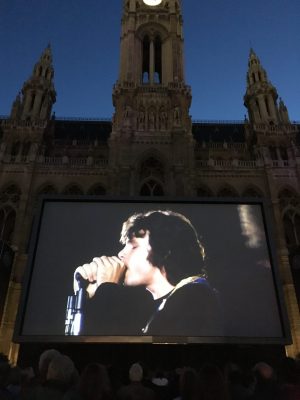


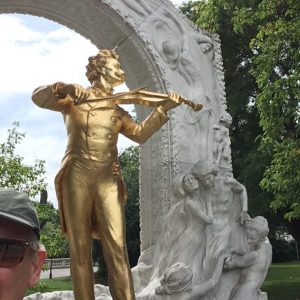 All it took was a wiener schnitzel, some yoga and a bike ride to get into Vienna. It was never part of my wish list to visit this city – it just happened to be my departure point from Europe on my air ticket so I thought, why not. Arriving at night after 12 hours of travelling I had to summon the energy to figure out yet another public transport system, my fifth now not counting London and Paris that I have a basic knowledge of, but Vienna was a challenge.
All it took was a wiener schnitzel, some yoga and a bike ride to get into Vienna. It was never part of my wish list to visit this city – it just happened to be my departure point from Europe on my air ticket so I thought, why not. Arriving at night after 12 hours of travelling I had to summon the energy to figure out yet another public transport system, my fifth now not counting London and Paris that I have a basic knowledge of, but Vienna was a challenge. The Lehrerhaus Pension is a budget hotel in the smelly old carpet style and there’s no atmosphere and nobody looks like they want to be here, especially the receptionist. They give you a bunch of keys, one for the front door, one for the internal door on your floor, one for the door to your room and one for a safety deposit box in your room.
The Lehrerhaus Pension is a budget hotel in the smelly old carpet style and there’s no atmosphere and nobody looks like they want to be here, especially the receptionist. They give you a bunch of keys, one for the front door, one for the internal door on your floor, one for the door to your room and one for a safety deposit box in your room.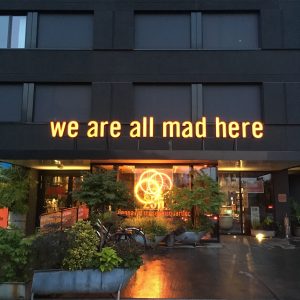
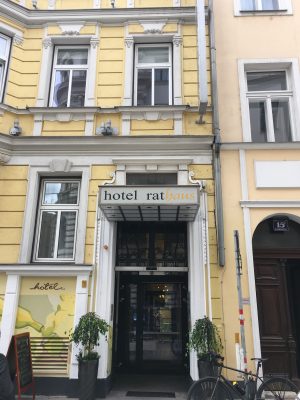 Nearby is a hotel called The Rathaus, – glad I didn’t check in there.
Nearby is a hotel called The Rathaus, – glad I didn’t check in there.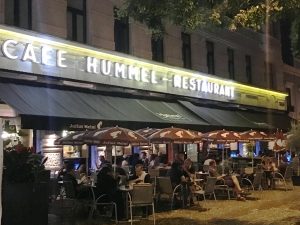 The first job was to find a laundromat to wash and overdue bag of clothes. The receptionist sent me off in the wrong direction, when I eventually found it two hours later there was no attendant only a coin interface with all the instructions in German, of course. Having loaded up and paid my money the door wouldn’t latch shut properly and water was sloshing out. I couldn’t change machines without going off to get more coins, and it was Sunday and everything was shut. So I wedged a couple of empty plastic bottles in to hold the door shut. When I returned, the entire floor of the laundromat was covered in water and my clothes sat in a pool of water in the machine.
The first job was to find a laundromat to wash and overdue bag of clothes. The receptionist sent me off in the wrong direction, when I eventually found it two hours later there was no attendant only a coin interface with all the instructions in German, of course. Having loaded up and paid my money the door wouldn’t latch shut properly and water was sloshing out. I couldn’t change machines without going off to get more coins, and it was Sunday and everything was shut. So I wedged a couple of empty plastic bottles in to hold the door shut. When I returned, the entire floor of the laundromat was covered in water and my clothes sat in a pool of water in the machine.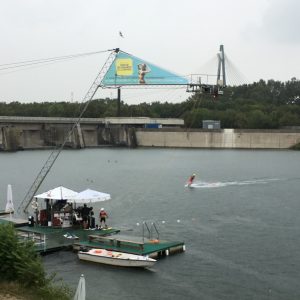
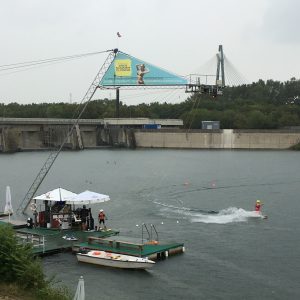
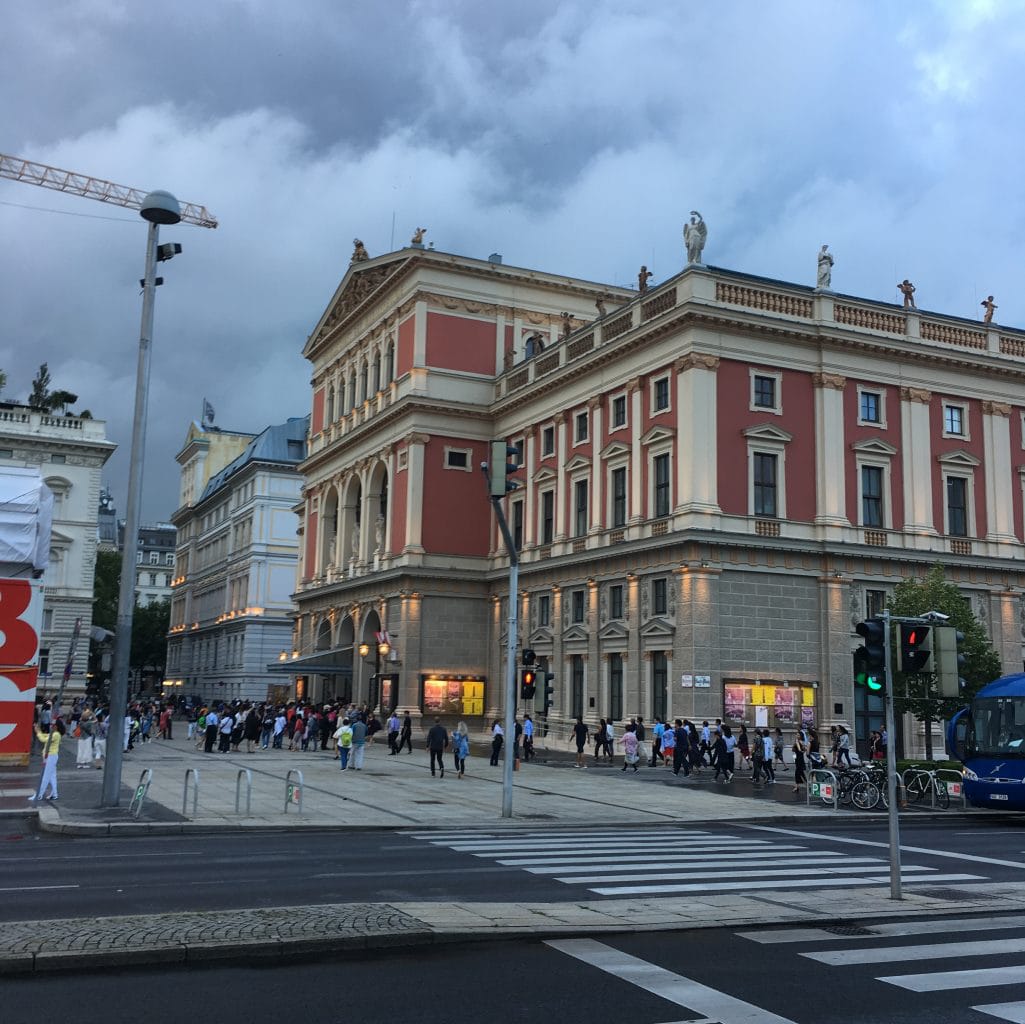
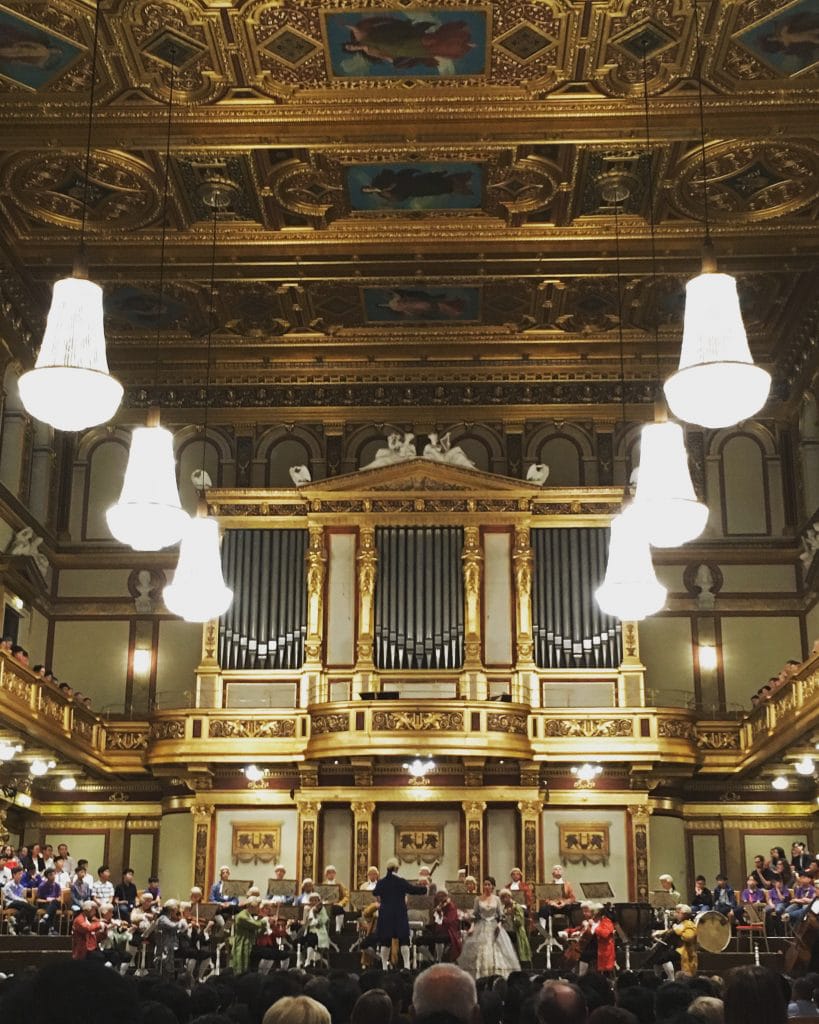 It’s amazing how a good meal, some exercise and some live music can change your whole outlook on life.
It’s amazing how a good meal, some exercise and some live music can change your whole outlook on life.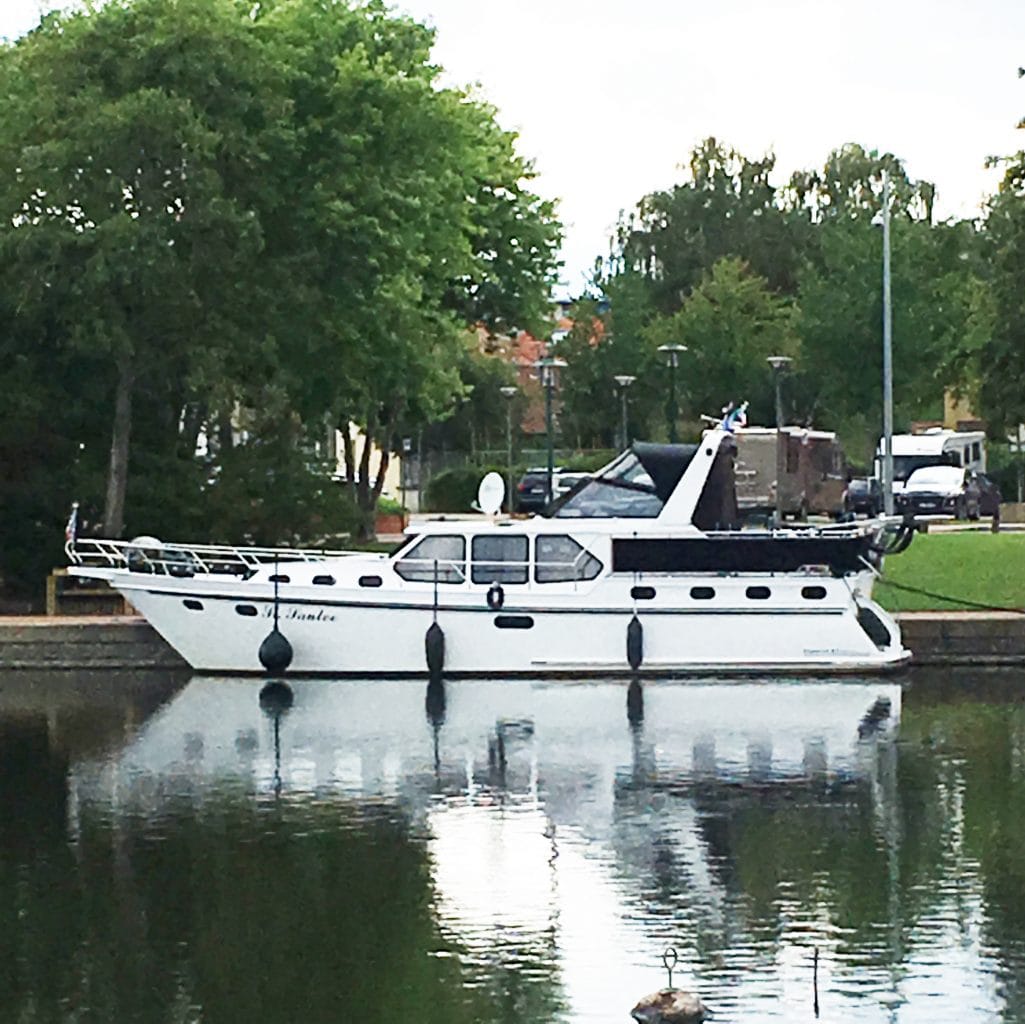
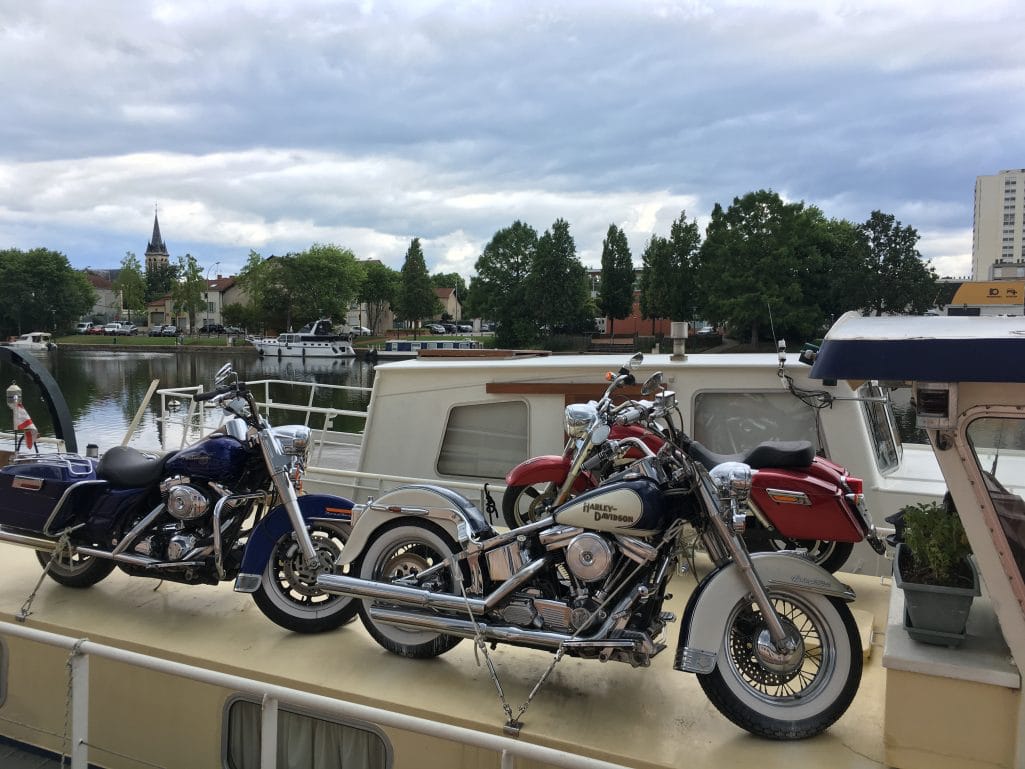
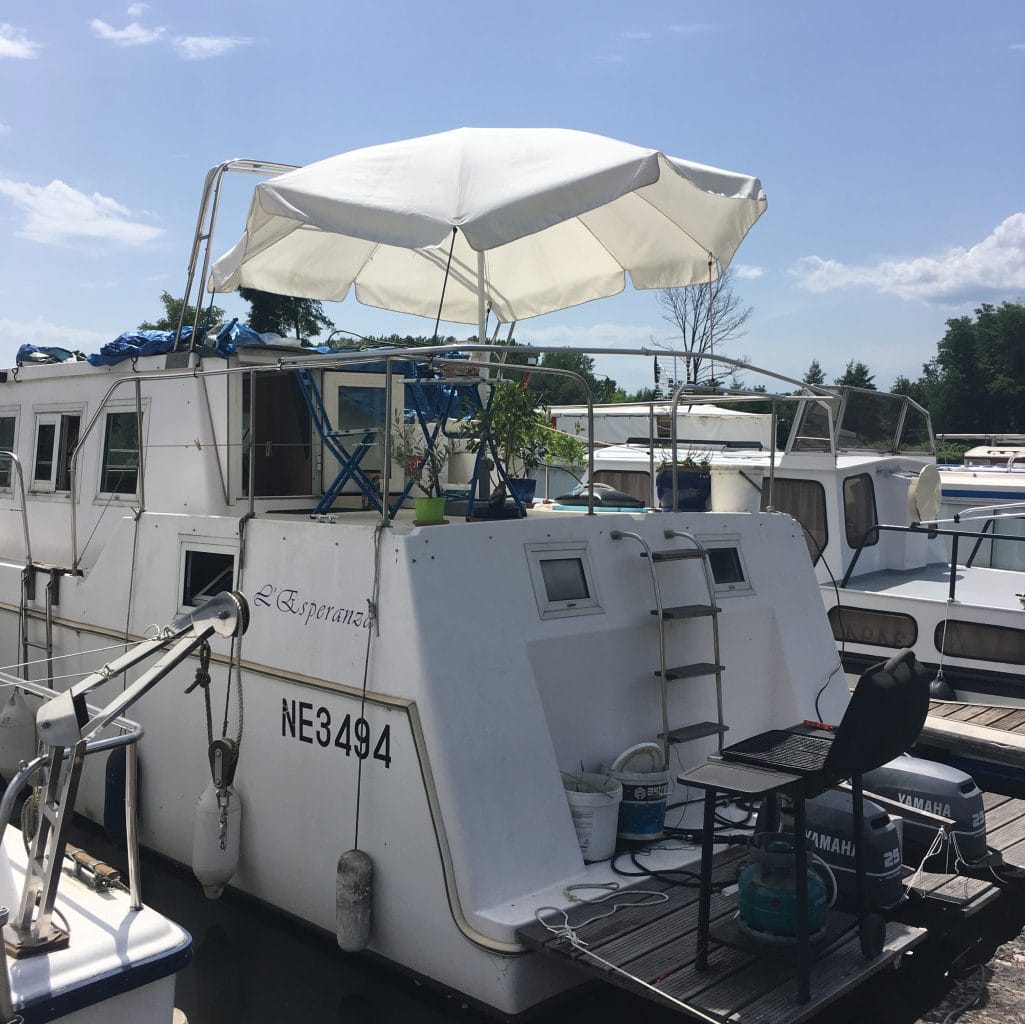
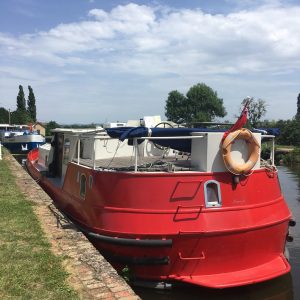 My preference would be to have the aft deck, where you’d spend a good deal of your time, with plenty of space and easily accessible to the interior. I’ve seen some with the aft on the same level as the interior, no steps. Some of them have too many steps in and out and that would be annoying after a while.
My preference would be to have the aft deck, where you’d spend a good deal of your time, with plenty of space and easily accessible to the interior. I’ve seen some with the aft on the same level as the interior, no steps. Some of them have too many steps in and out and that would be annoying after a while.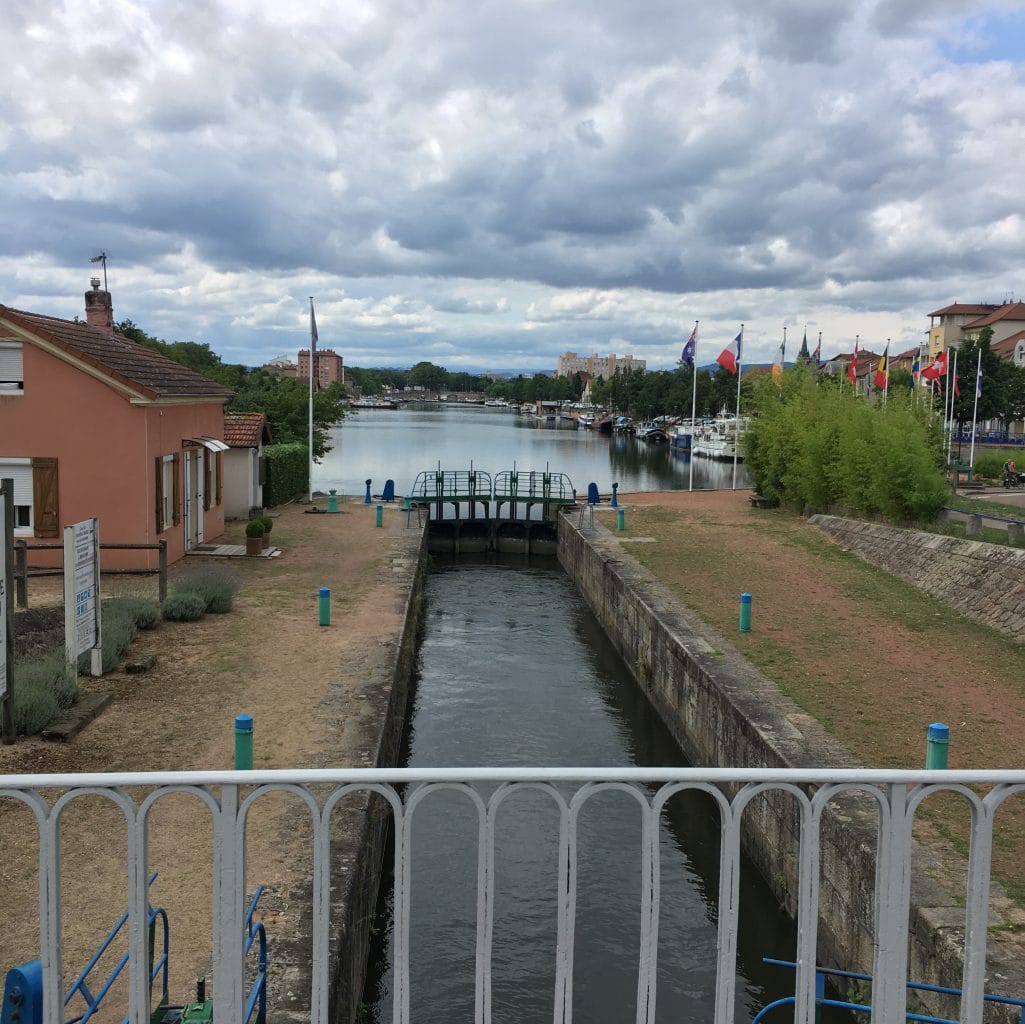
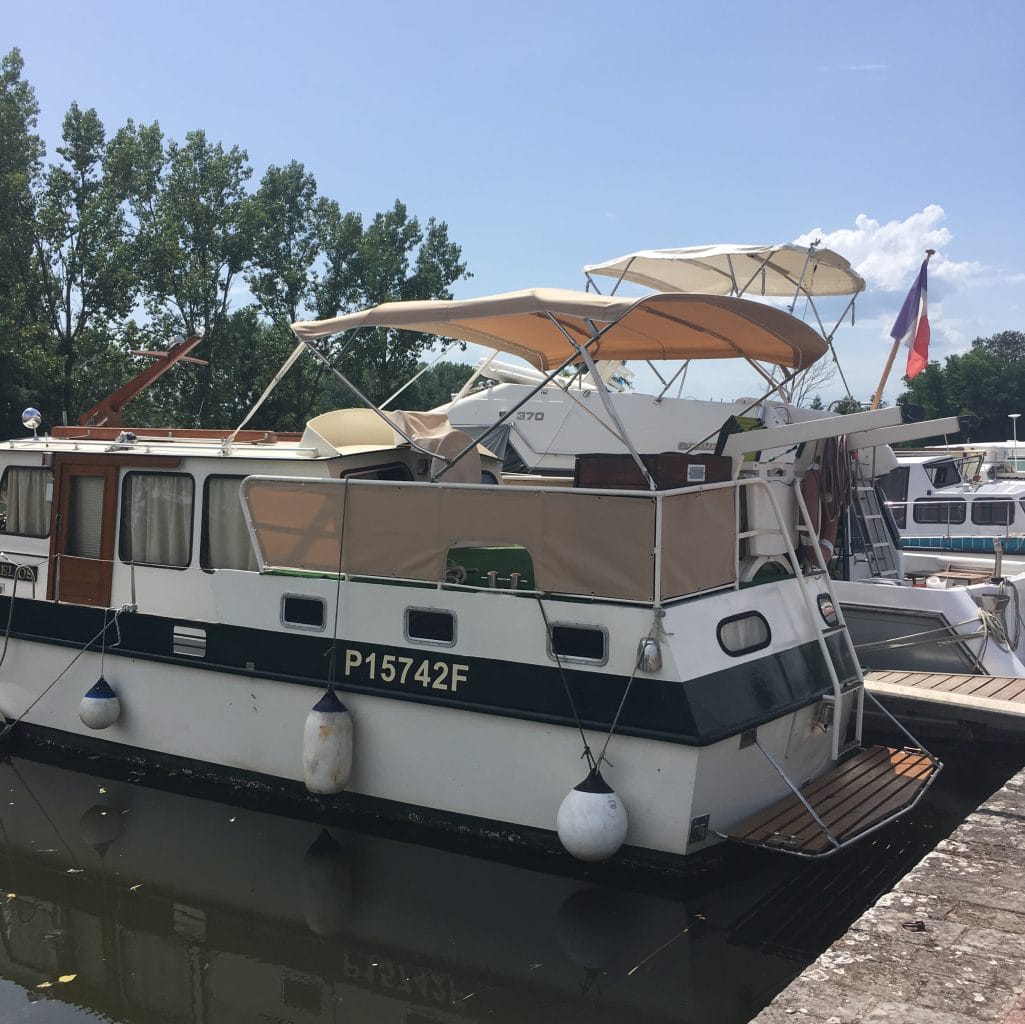
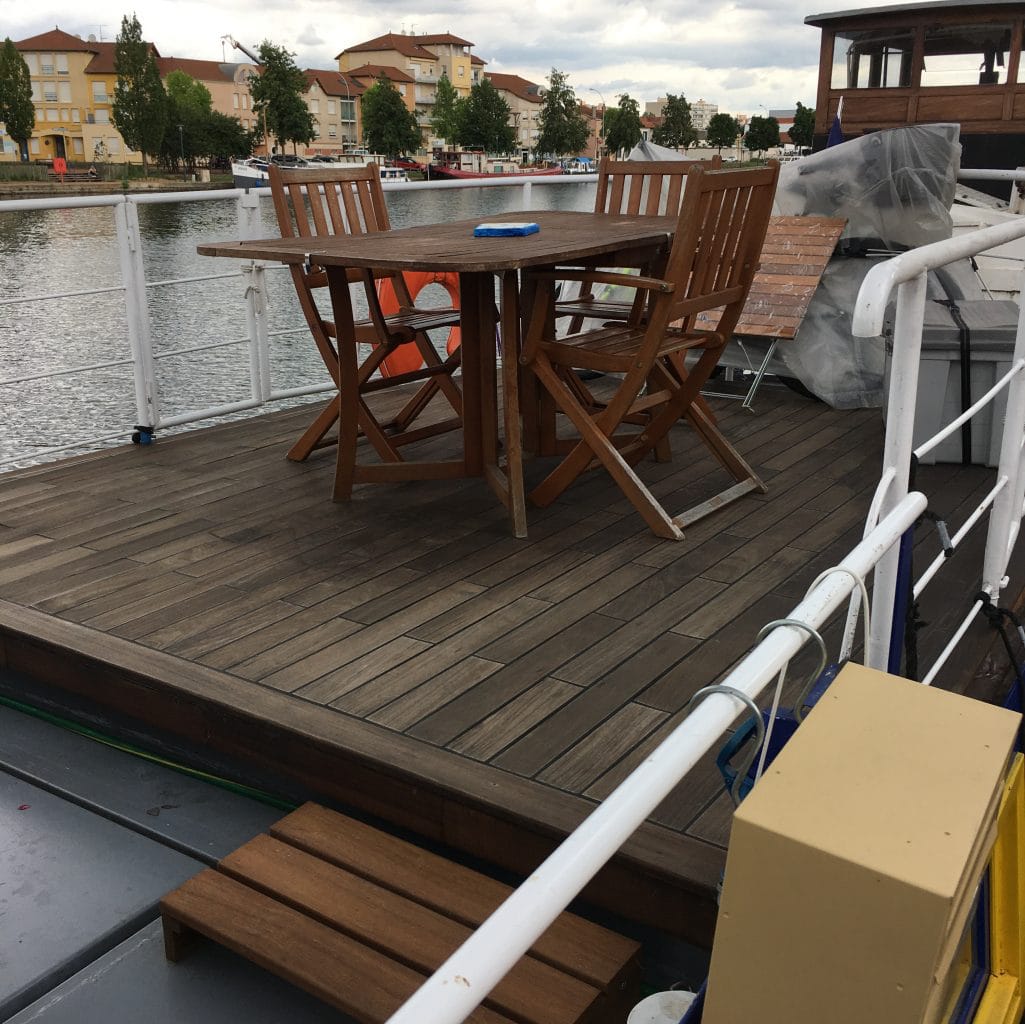
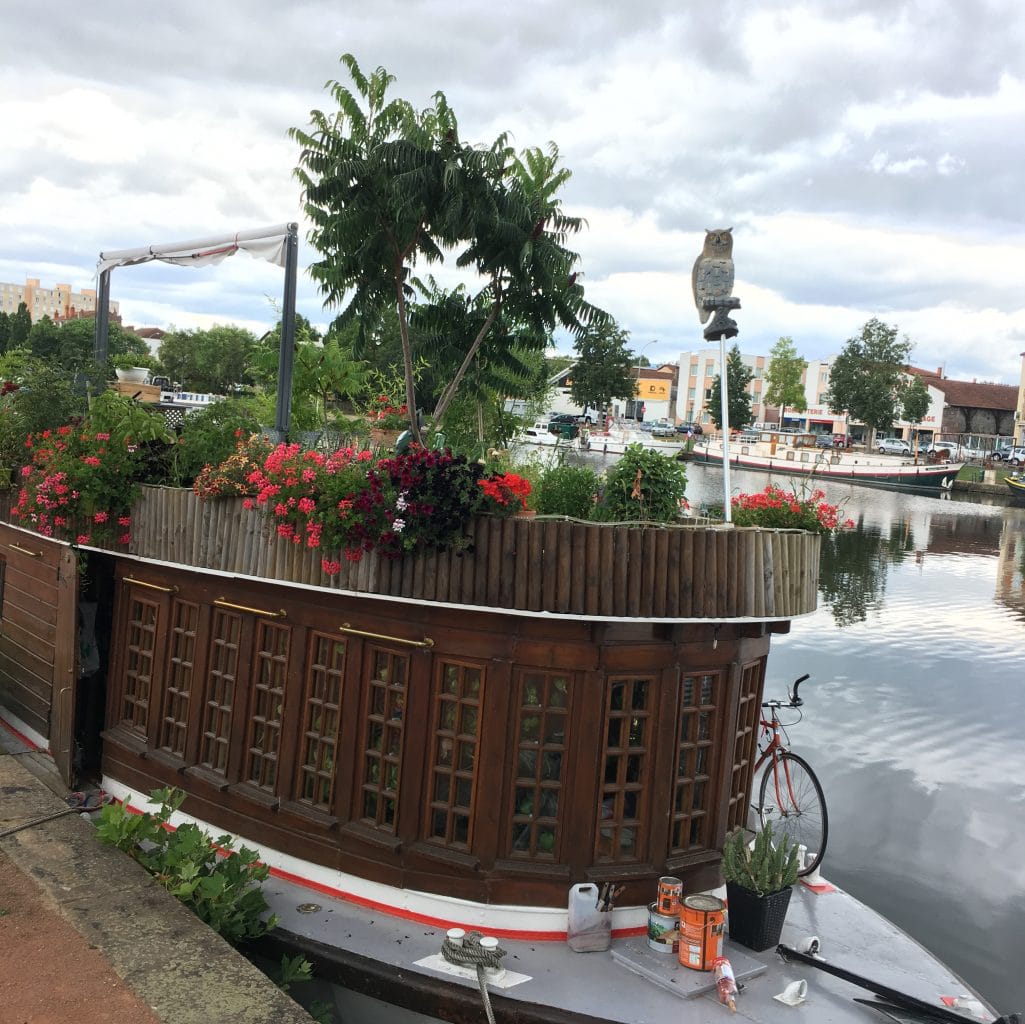
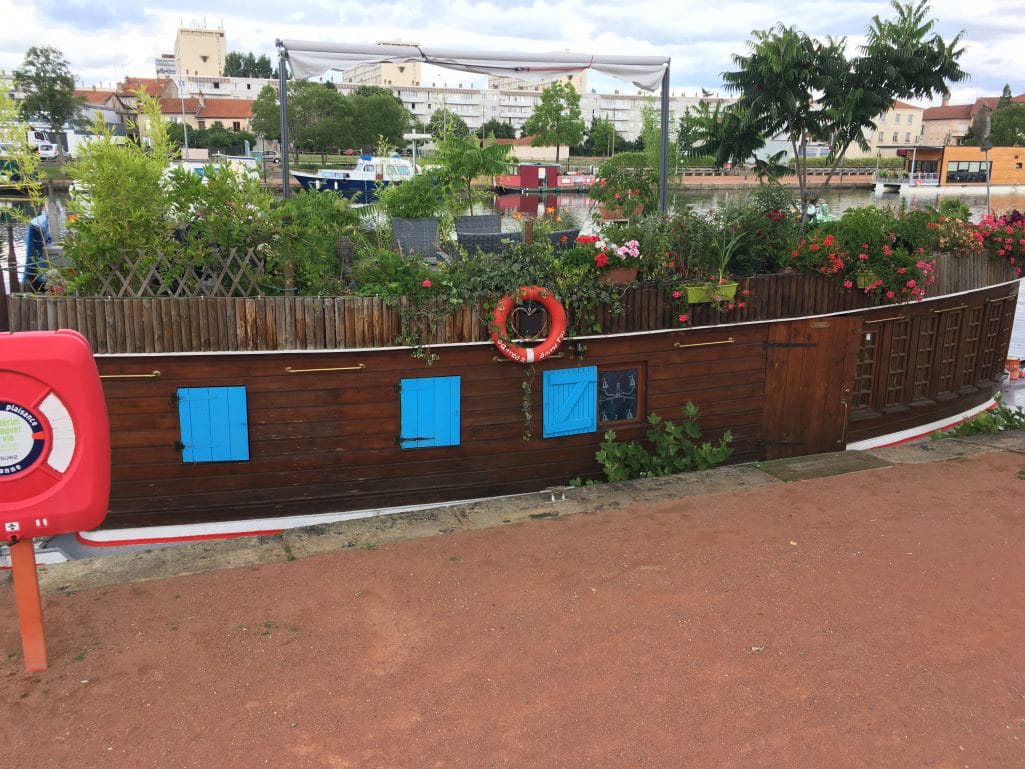
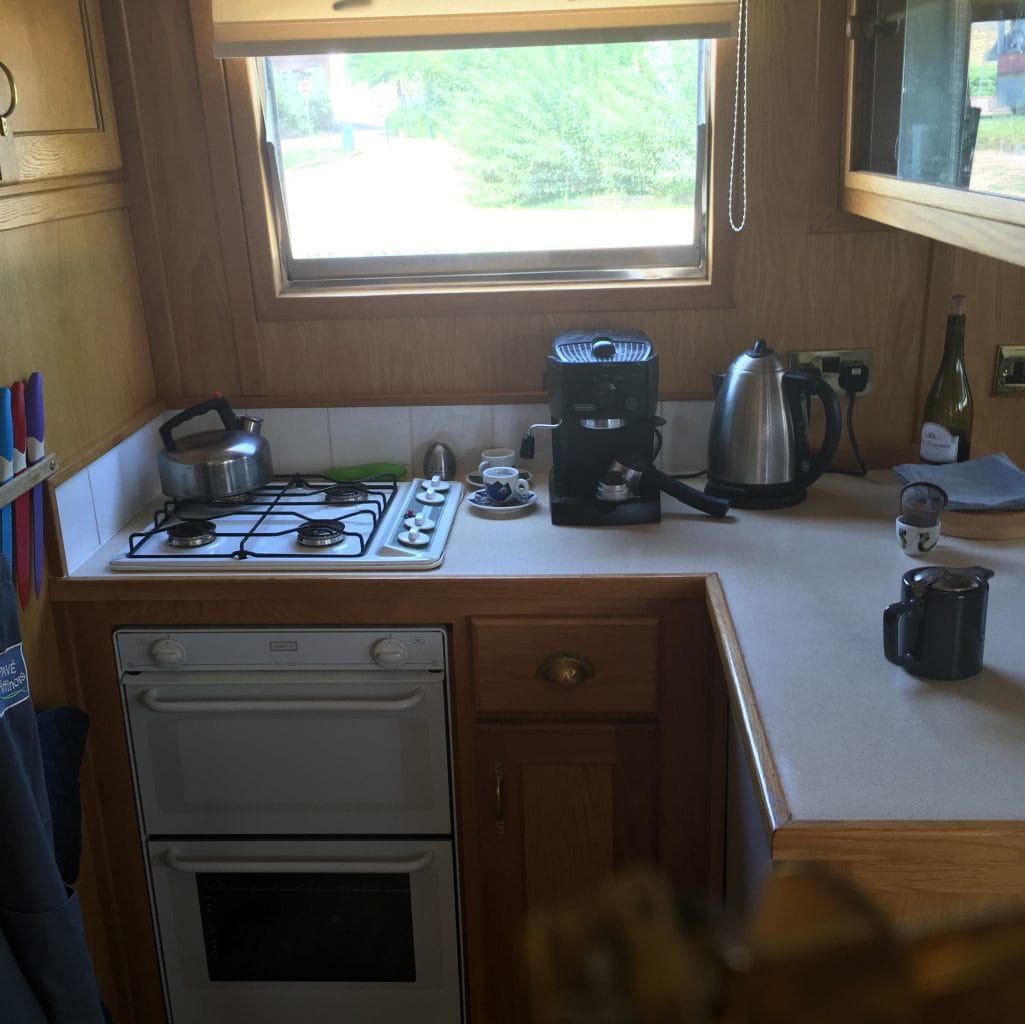
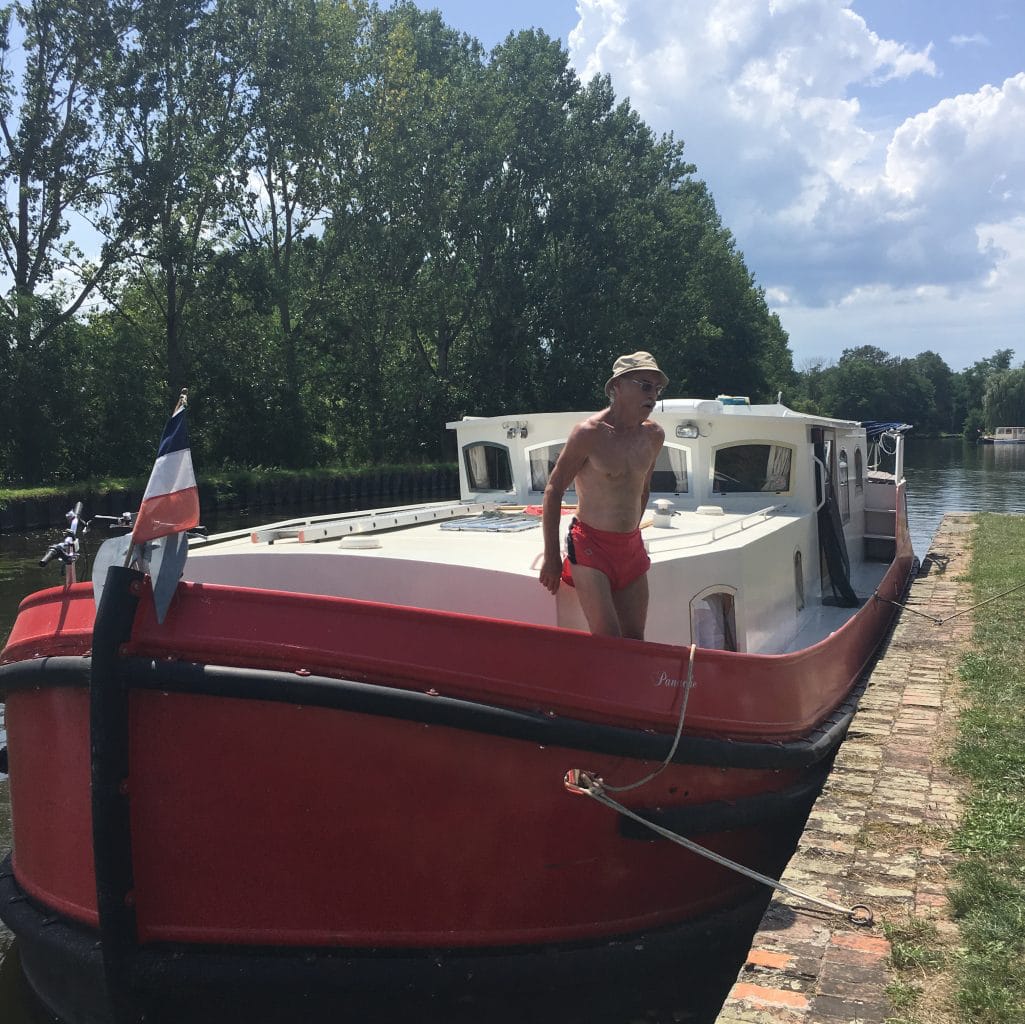
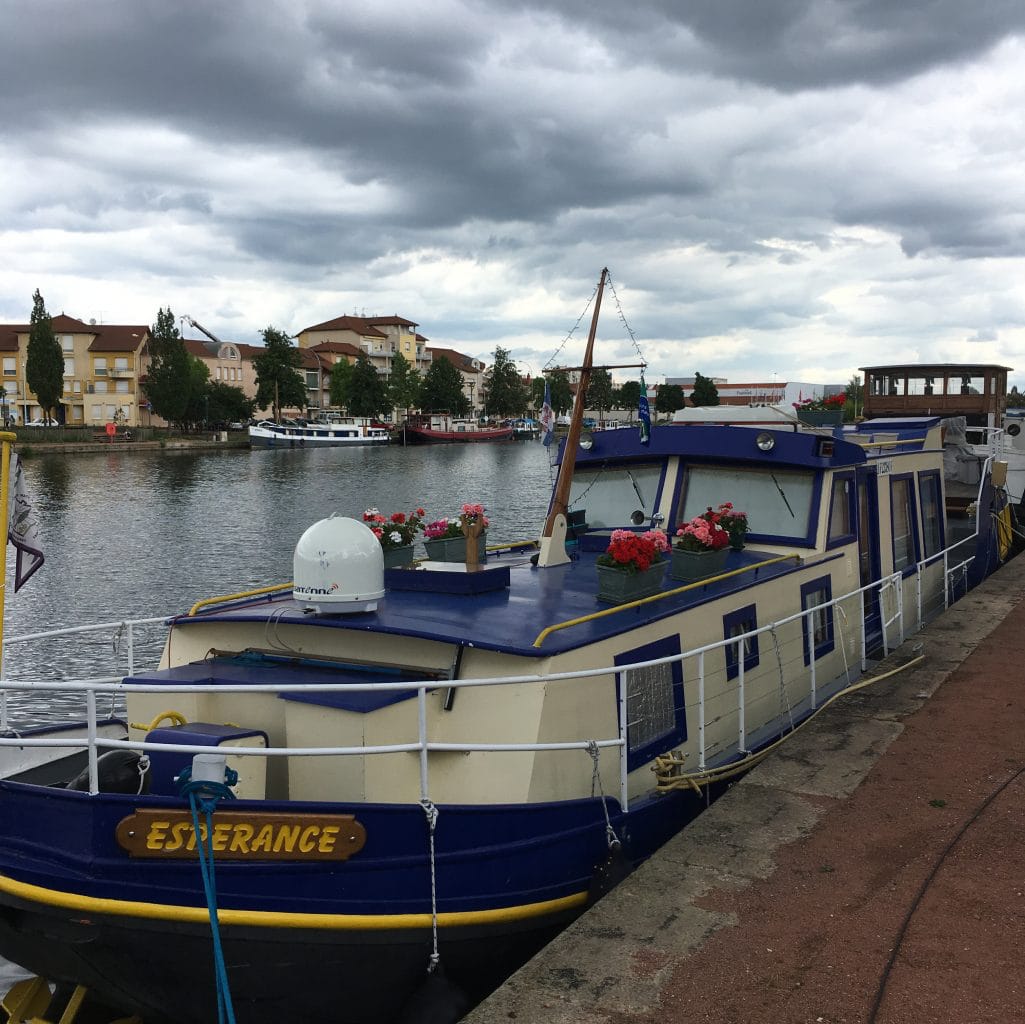
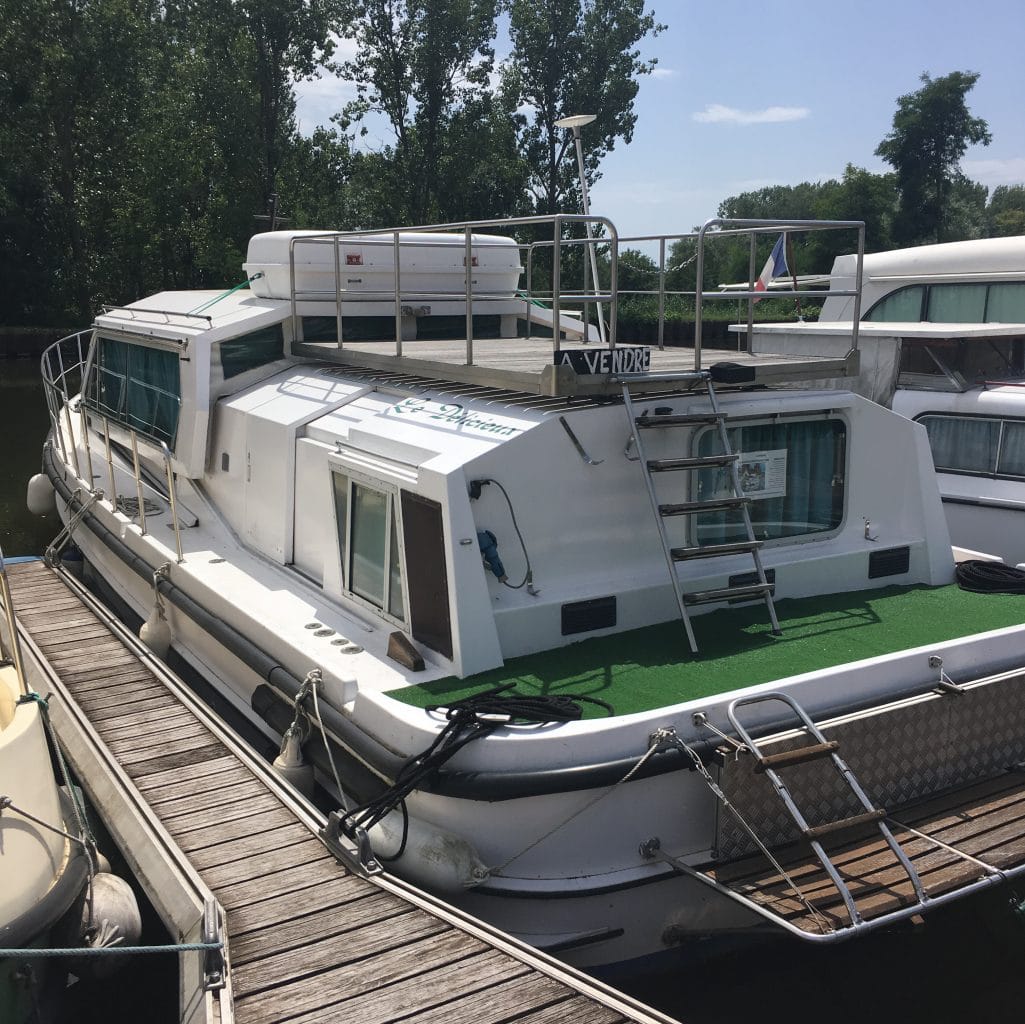
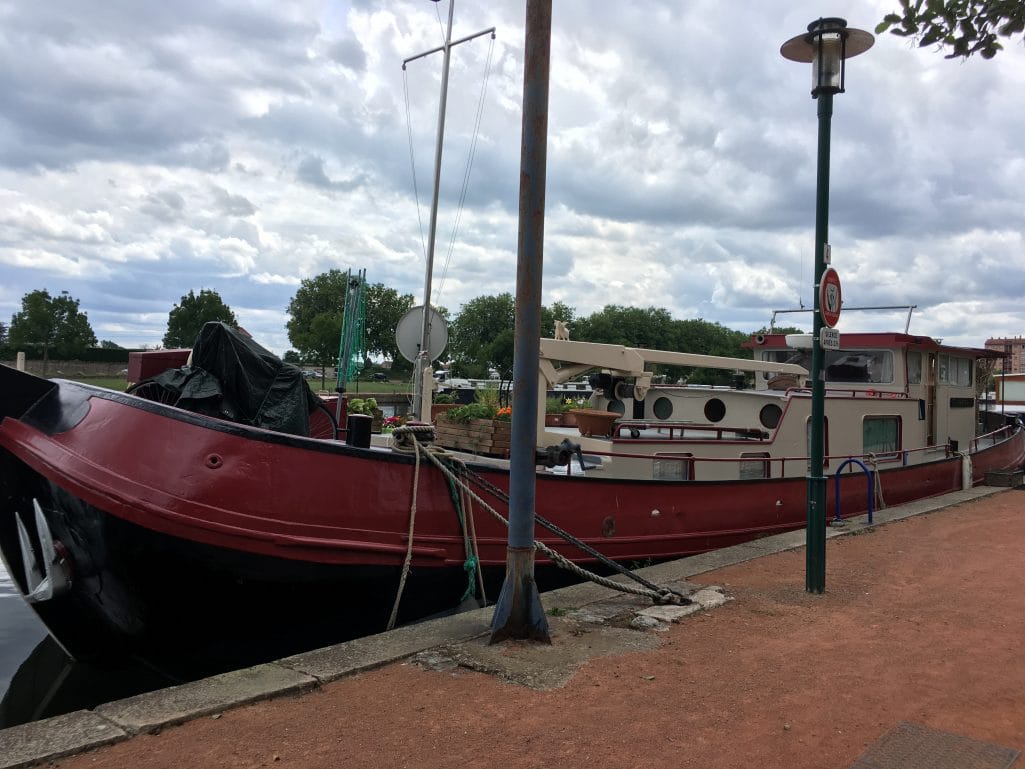
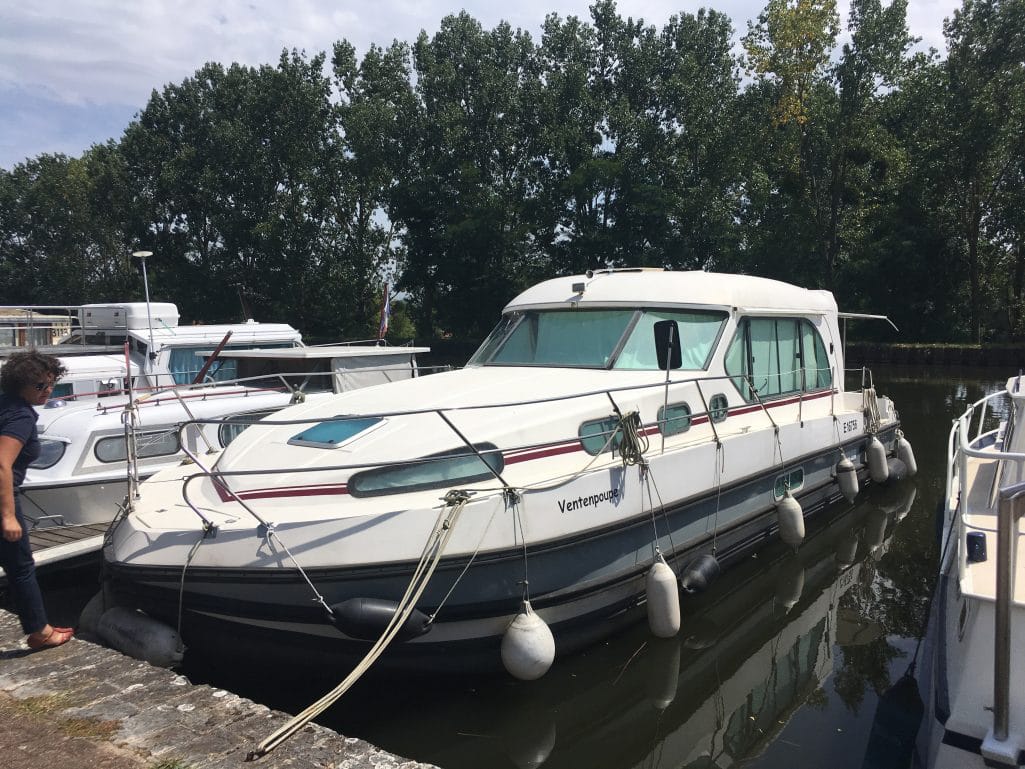
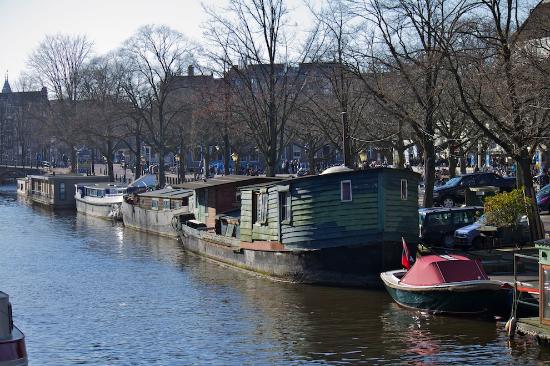
 My experience of Paris this time was so different. I have no idea how I ended up wandering around with a guitar waiting for a bus at 2.30 in the morning.
My experience of Paris this time was so different. I have no idea how I ended up wandering around with a guitar waiting for a bus at 2.30 in the morning.

 I would recommend The Generator Hostels to anyone budget travelling in Europe, they’re a new approach to hostels and more like a hotel. They cost about NZ$60 a night. The big difference between these and the usual hostels is there’s no kitchen, no self-catering, no fridges, no food to be brought into the place (but people still do, of course, and take it to their rooms. But the rooms are cleaned everyday, so they’re keeping an eye on it). There is a $NZ14 breakfast available, which is probably better value than you’d get in the local street cafés because it’s self-serve which means you can load up for later. The rooms all have ensuites and the reception areas are very modern with spacious parts set aside on the ground floor with sofas, tables and chairs to hang out with your friends. Generator Hostels are the way of the future I think, they’re all over Europe, referred to as Designer Hostels. The wifi reception is strong everywhere and good in all the rooms – and there’s no password. My room had 3 other women already asleep in the room. There seems to be so many women travelling now, not just as couples but many solo and in pairs, and completely comfortable staying in mixed dorms that they can opt for and get slightly cheaper than a women’s dorm.
I would recommend The Generator Hostels to anyone budget travelling in Europe, they’re a new approach to hostels and more like a hotel. They cost about NZ$60 a night. The big difference between these and the usual hostels is there’s no kitchen, no self-catering, no fridges, no food to be brought into the place (but people still do, of course, and take it to their rooms. But the rooms are cleaned everyday, so they’re keeping an eye on it). There is a $NZ14 breakfast available, which is probably better value than you’d get in the local street cafés because it’s self-serve which means you can load up for later. The rooms all have ensuites and the reception areas are very modern with spacious parts set aside on the ground floor with sofas, tables and chairs to hang out with your friends. Generator Hostels are the way of the future I think, they’re all over Europe, referred to as Designer Hostels. The wifi reception is strong everywhere and good in all the rooms – and there’s no password. My room had 3 other women already asleep in the room. There seems to be so many women travelling now, not just as couples but many solo and in pairs, and completely comfortable staying in mixed dorms that they can opt for and get slightly cheaper than a women’s dorm. I was up and away at 8am before any of my room mates were awake and had a basic plan for the day. First, the nearby Sacre-Coeur for the big view, St Germaine-des-Pres for the street culture, Musée d’Orsay for some art, and to stand beneath the Tour Eiffel. But it didn’t go to plan. I must have taken the wrong streets up to the Basilique. I was wanting some breakfast but the streets were all just drab and faceless apartments – where were the quaint cafés with guys wearing Ray Ban Wayfarers and elegant women wafting perfume walking with poodles that I remembered from 20 years ago?
I was up and away at 8am before any of my room mates were awake and had a basic plan for the day. First, the nearby Sacre-Coeur for the big view, St Germaine-des-Pres for the street culture, Musée d’Orsay for some art, and to stand beneath the Tour Eiffel. But it didn’t go to plan. I must have taken the wrong streets up to the Basilique. I was wanting some breakfast but the streets were all just drab and faceless apartments – where were the quaint cafés with guys wearing Ray Ban Wayfarers and elegant women wafting perfume walking with poodles that I remembered from 20 years ago?
 When I got there I was disappointed I couldn’t walk all the way around the Sacre-Coeur, it’s all gated and locked off, and the only big view available from the front steps didn’t include the Tour Eiffel! What’s the point of taking a photo of the Paris skyline from the top of a hill if you can’t get the Eiffel Tower in it! – ha ha <-;
When I got there I was disappointed I couldn’t walk all the way around the Sacre-Coeur, it’s all gated and locked off, and the only big view available from the front steps didn’t include the Tour Eiffel! What’s the point of taking a photo of the Paris skyline from the top of a hill if you can’t get the Eiffel Tower in it! – ha ha <-; Everywhere I went I was searched by security, everyone was, even entering a canal swimming la plage area. Anyway, I sat inside the Basilique and had some snacks and water from my pack looking up at the dome. All the little gates around the pews were locked up, why so many locks everywhere? Twenty years ago I was in awe of the power expressed in the art and architecture of the Roman Catholics – but now, to me it looks different; the biggest and most elaborate con-job in history; cruelty, subjugation, exploitation and the repression of women and science, a relic of the dark ages, and still today expressing it’s medieval mumbo jumbo.
Everywhere I went I was searched by security, everyone was, even entering a canal swimming la plage area. Anyway, I sat inside the Basilique and had some snacks and water from my pack looking up at the dome. All the little gates around the pews were locked up, why so many locks everywhere? Twenty years ago I was in awe of the power expressed in the art and architecture of the Roman Catholics – but now, to me it looks different; the biggest and most elaborate con-job in history; cruelty, subjugation, exploitation and the repression of women and science, a relic of the dark ages, and still today expressing it’s medieval mumbo jumbo. So interesting going on the Metro again, I was amazed they still had the same system with the little paper tickets – I bought the 10 pack, as you do, and watched young guys jump over the turnstyles. I wondered at what age a bloke gives up doing that little athletic move. Other guys enter using the exit gate by reaching their hand around and pressing the button to open it. No wonder they have the Oyster card system in London.
So interesting going on the Metro again, I was amazed they still had the same system with the little paper tickets – I bought the 10 pack, as you do, and watched young guys jump over the turnstyles. I wondered at what age a bloke gives up doing that little athletic move. Other guys enter using the exit gate by reaching their hand around and pressing the button to open it. No wonder they have the Oyster card system in London. I chanced upon a small art gallery, the
I chanced upon a small art gallery, the  Later, I returned to the hostel, the subway was getting really hot and crowded by now and I needed a break. The room was empty and I slept and showered and headed out again with my guitar to an open-mic night on the other side of Paris. When I finally got there the bar manager shrugged his shoulders – there’s was nothing going on. According to my Google search there are plenty on Tuesday and Wednesday night, of course – but only one on Lundi and that wasn’t happening.
Later, I returned to the hostel, the subway was getting really hot and crowded by now and I needed a break. The room was empty and I slept and showered and headed out again with my guitar to an open-mic night on the other side of Paris. When I finally got there the bar manager shrugged his shoulders – there’s was nothing going on. According to my Google search there are plenty on Tuesday and Wednesday night, of course – but only one on Lundi and that wasn’t happening. The Tour Eiffel looks magnificent when up close, something I never did before. I came towards it from the 16th, west of the Seine across the Pont d’ Lena bridge to the 7th, unfortunately the gardens, the Parc du Champde Mars, wre fenced off. The Metro had stopped, the buses were few and far between, I waited nearly an hour and took a bus all the way across Paris (where would I be without Google maps with bus timetables). I finished the last part of my journey to the hostel with a $12 taxi – the only one I have taken so far on this trip. I didn’t feel all that concerned out late at night, I just figured another 2km walk down these streets holding an iPhone for the map with drunken kids and homeless people sleeping here and there, was just too much.
The Tour Eiffel looks magnificent when up close, something I never did before. I came towards it from the 16th, west of the Seine across the Pont d’ Lena bridge to the 7th, unfortunately the gardens, the Parc du Champde Mars, wre fenced off. The Metro had stopped, the buses were few and far between, I waited nearly an hour and took a bus all the way across Paris (where would I be without Google maps with bus timetables). I finished the last part of my journey to the hostel with a $12 taxi – the only one I have taken so far on this trip. I didn’t feel all that concerned out late at night, I just figured another 2km walk down these streets holding an iPhone for the map with drunken kids and homeless people sleeping here and there, was just too much. That was my day in Paris and the best part was meeting the woman at the table in the café who showed me two of her favourite small hidden public gardens nearby, they would have been convent cloisters, I think, they all had fruit trees and vegetable patches. It was nice walking with someone else for a change without having to hold my phone – to just chat away and be shown around a bit. I knew Paris in mid-July was never going to be a great idea and I was glad my plans had only allowed one full day. I was looking forward to getting into the countryside. My accomodation there had a pool and I was really, really looking forward to that pool.
That was my day in Paris and the best part was meeting the woman at the table in the café who showed me two of her favourite small hidden public gardens nearby, they would have been convent cloisters, I think, they all had fruit trees and vegetable patches. It was nice walking with someone else for a change without having to hold my phone – to just chat away and be shown around a bit. I knew Paris in mid-July was never going to be a great idea and I was glad my plans had only allowed one full day. I was looking forward to getting into the countryside. My accomodation there had a pool and I was really, really looking forward to that pool. My journey involves a bus to Roanne, a train to Lyon, the TGV to Paris Charles de Galle, and a flight, and I needed to co-ordinate all those journey times. And of course I was looking for all the cheapest variables. There were no direct flights from Lyon to Vienna either, only ones going via other places and taking 10 hours. It may have been better to hire a car from Lyon to Vienna, I don’t know, but that would result in a different set of costs and issues – and might take two days. The only decent wifi I could do all this research was at the Office d’ Tourisime in the local village of Marcigny. It took me such a long time and they needed to close at 6pm but I continued outside sitting on the step.
My journey involves a bus to Roanne, a train to Lyon, the TGV to Paris Charles de Galle, and a flight, and I needed to co-ordinate all those journey times. And of course I was looking for all the cheapest variables. There were no direct flights from Lyon to Vienna either, only ones going via other places and taking 10 hours. It may have been better to hire a car from Lyon to Vienna, I don’t know, but that would result in a different set of costs and issues – and might take two days. The only decent wifi I could do all this research was at the Office d’ Tourisime in the local village of Marcigny. It took me such a long time and they needed to close at 6pm but I continued outside sitting on the step.


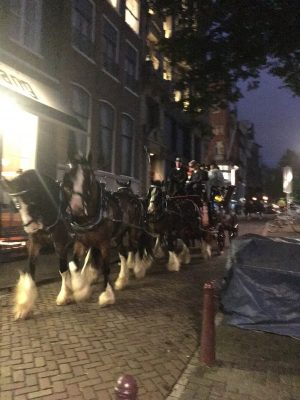




 A taste of the old Amsterdam last night when about forty horse-drawn carriages did their annual trot around the old town. Big, beautiful horses of every breed went past me in a parade of rolling antiques. From the sound all the horses were well-shod and looked well-groomed too and many with their manes plaitted, and the occupants were dressed in period clothes. It’s Saturday night and people are out eating in restaurants alongside the canal all cheering them on. The carriages are originals with examples from every period; heavy cart horses pulling heavy carriages, others pulling passenger coaches, light four-wheeled open rigs and lighter two wheeled traps or hansom cabs with a single horse. I thought it was a bit surreal with so many coming through one afer the other. I had been in Amsterdam for 5 days this was my last evening. I had spent so much time absorping all the amazing history of this place, and now I could really get a full sense of what it was like. Back in the day all the horse droppings were swept into the canals and of course the smell became a problem – probably everything got thrown in the canal, it was probably a big open sewer. Not now, it’s safe to swim in it, apparently, more than you can say about New Zealand rivers.
A taste of the old Amsterdam last night when about forty horse-drawn carriages did their annual trot around the old town. Big, beautiful horses of every breed went past me in a parade of rolling antiques. From the sound all the horses were well-shod and looked well-groomed too and many with their manes plaitted, and the occupants were dressed in period clothes. It’s Saturday night and people are out eating in restaurants alongside the canal all cheering them on. The carriages are originals with examples from every period; heavy cart horses pulling heavy carriages, others pulling passenger coaches, light four-wheeled open rigs and lighter two wheeled traps or hansom cabs with a single horse. I thought it was a bit surreal with so many coming through one afer the other. I had been in Amsterdam for 5 days this was my last evening. I had spent so much time absorping all the amazing history of this place, and now I could really get a full sense of what it was like. Back in the day all the horse droppings were swept into the canals and of course the smell became a problem – probably everything got thrown in the canal, it was probably a big open sewer. Not now, it’s safe to swim in it, apparently, more than you can say about New Zealand rivers. The Dutch were the most powerful traders on the globe with thousands of ships build in their massive ship yards going to every corner of the globe. Abel Tasman charting one section of coast of New Zealand. I even found the reference on an original globe in the Rijksmuseum. I’m not sure what section of coast that is – Banks Peninsula?
The Dutch were the most powerful traders on the globe with thousands of ships build in their massive ship yards going to every corner of the globe. Abel Tasman charting one section of coast of New Zealand. I even found the reference on an original globe in the Rijksmuseum. I’m not sure what section of coast that is – Banks Peninsula?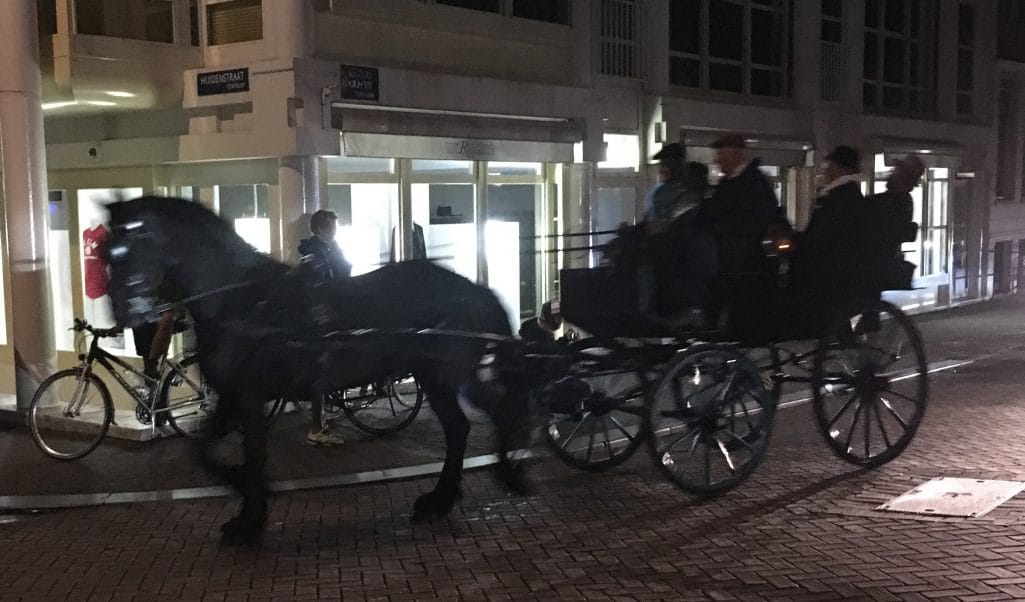 In Amsterdam the bike has absolute priority and it’s all enshrined in various laws – and it’s so much fun. There’s trams, bikes, pedestrians, cars, scooters all swerving around one another and happily co-existing in the same space. Surprisingly, there’s a very low rate of injury – it seems to works; people smile, call out, ring their bells and are so considerate. The locals who know exacly where they are going race along and shout out to you if you’re not over on the left. I found myself walking in bike lanes all the time and nearly run down a number of times. They say they hope to eliminate motor vehicles from the city completely one day.
In Amsterdam the bike has absolute priority and it’s all enshrined in various laws – and it’s so much fun. There’s trams, bikes, pedestrians, cars, scooters all swerving around one another and happily co-existing in the same space. Surprisingly, there’s a very low rate of injury – it seems to works; people smile, call out, ring their bells and are so considerate. The locals who know exacly where they are going race along and shout out to you if you’re not over on the left. I found myself walking in bike lanes all the time and nearly run down a number of times. They say they hope to eliminate motor vehicles from the city completely one day.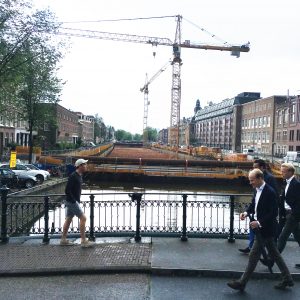 I have added a pic that may not be clear but it shows a new project where they have blocked a 100 metre section of the canal, dug down to create three levels of parking for bikes and cars, and will rebuild the canal again on top – amazing.
I have added a pic that may not be clear but it shows a new project where they have blocked a 100 metre section of the canal, dug down to create three levels of parking for bikes and cars, and will rebuild the canal again on top – amazing.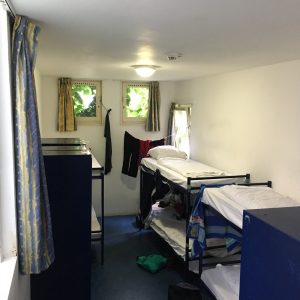
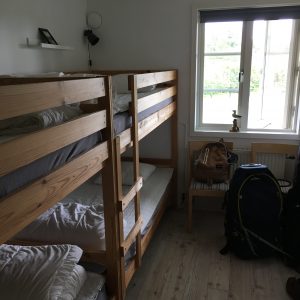
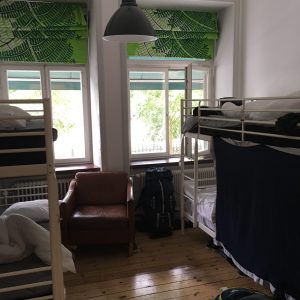
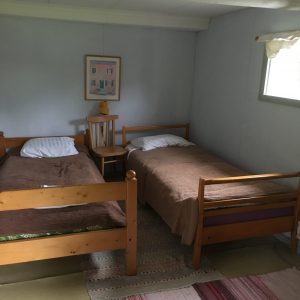 People ask me how I can afford to travel for such a long time but I have managed to keep the costs quite low. I’ve planned in advance and I’ve made comfort compromises all along the way. It’s also cheaper to visit a number of places as part of a round trip than going to a series of places at separate times. In terms of planning, the first priority was to maintain the ongoing fixed costs at home then figure out how much I’d need on the journey. This would include local travel, accomodation and food, plus entry fees for the museums and galleries. I travel cheap because I sleep in hostels in 4 or 6 bed dorms, I seldom eat at restaurants and don’t drink alcohol. I take extra food from the free or low cost breakfasts at hostels and keep it for my lunch. I travel on public transport or hire a bike – never taxis or Ubers. I always look for the lowest cost option to get from the airport to the city centre. I’m able to walk with all my gear for 3 0r 4 kilometres. I carry a bottle of water and a nut and dried fruit mix for snacks that I buy at the supermarket. I buy muesli and a pottle of yoghurt to mix together for my breakfast if there’s no free one, and I only buy a coffee occasionally and I have a stash of tea bags. That’s how I travel cheap. The current hostel I’m in here in Amsterdam, the Hans Brinker, is the worst yet – the mattress is hard foam, the windows don’t open properly and my room mates come and go at all hours through the night. The wierdest one I had was two guys who arrived at 3am in my dorm with no luggage and slept in their clothes – what’s going on there?
People ask me how I can afford to travel for such a long time but I have managed to keep the costs quite low. I’ve planned in advance and I’ve made comfort compromises all along the way. It’s also cheaper to visit a number of places as part of a round trip than going to a series of places at separate times. In terms of planning, the first priority was to maintain the ongoing fixed costs at home then figure out how much I’d need on the journey. This would include local travel, accomodation and food, plus entry fees for the museums and galleries. I travel cheap because I sleep in hostels in 4 or 6 bed dorms, I seldom eat at restaurants and don’t drink alcohol. I take extra food from the free or low cost breakfasts at hostels and keep it for my lunch. I travel on public transport or hire a bike – never taxis or Ubers. I always look for the lowest cost option to get from the airport to the city centre. I’m able to walk with all my gear for 3 0r 4 kilometres. I carry a bottle of water and a nut and dried fruit mix for snacks that I buy at the supermarket. I buy muesli and a pottle of yoghurt to mix together for my breakfast if there’s no free one, and I only buy a coffee occasionally and I have a stash of tea bags. That’s how I travel cheap. The current hostel I’m in here in Amsterdam, the Hans Brinker, is the worst yet – the mattress is hard foam, the windows don’t open properly and my room mates come and go at all hours through the night. The wierdest one I had was two guys who arrived at 3am in my dorm with no luggage and slept in their clothes – what’s going on there?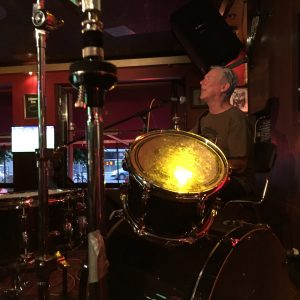
 Last night I played at The Temple Bar in Gamla Stan, the old town on a tiny island in central Stockholm. I just turned up with my guitar and the manager, Philip, who used to be a roadie said go ahead and mic-ed me up.
Last night I played at The Temple Bar in Gamla Stan, the old town on a tiny island in central Stockholm. I just turned up with my guitar and the manager, Philip, who used to be a roadie said go ahead and mic-ed me up. I haven’t done much practise lately and my voice is not all there but I was surprised how much material I could remember and played for about 40 minutes. As usual, I got the best response from Stand By Me and Many Rivers To Cross.
I haven’t done much practise lately and my voice is not all there but I was surprised how much material I could remember and played for about 40 minutes. As usual, I got the best response from Stand By Me and Many Rivers To Cross.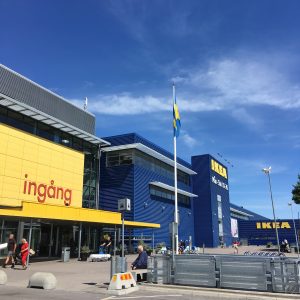
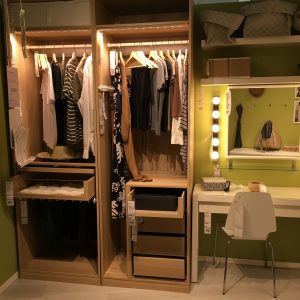


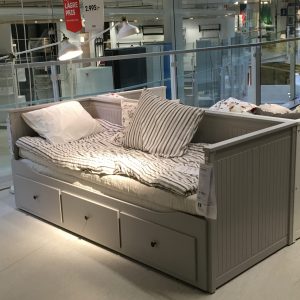
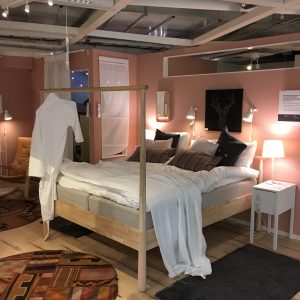 The scope of it is quite amazing with huge areas dedicated to lighting, kitchenware and storage, and there’s a team of people sitting at computers helping customers design their kitchens. I wasn’t there to buy but I took lots of photos and have plenty of ideas. It’s all about creative ways to optomise interior space. As the world becomes more crowded people need to look at ways to reduce their personal living space. I did buy a couple of small items and went to the exit at which point I had to walk through the warehouse area where all the flat packs are collected, then to the checkouts were there’s another bistro – coffe and food everywhere. So many staff, so well organised, so friendly. Sweden.
The scope of it is quite amazing with huge areas dedicated to lighting, kitchenware and storage, and there’s a team of people sitting at computers helping customers design their kitchens. I wasn’t there to buy but I took lots of photos and have plenty of ideas. It’s all about creative ways to optomise interior space. As the world becomes more crowded people need to look at ways to reduce their personal living space. I did buy a couple of small items and went to the exit at which point I had to walk through the warehouse area where all the flat packs are collected, then to the checkouts were there’s another bistro – coffe and food everywhere. So many staff, so well organised, so friendly. Sweden.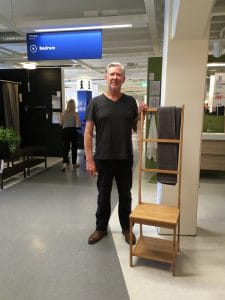 And as for Mike Hoskings saying NZers don’t like public transport. ‘because we like cars and cars need roads’. Someone needs to pour a bucket of cold water on his head and tell him to wake up. I wonder how much he donates to the National Party?
And as for Mike Hoskings saying NZers don’t like public transport. ‘because we like cars and cars need roads’. Someone needs to pour a bucket of cold water on his head and tell him to wake up. I wonder how much he donates to the National Party?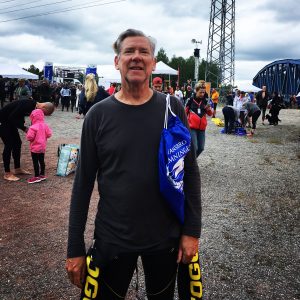 I registered for the Vansbro swim not just because I enjoy swimming long distances but because I thought it would be a good way to see another side of Swedish life, away from the
I registered for the Vansbro swim not just because I enjoy swimming long distances but because I thought it would be a good way to see another side of Swedish life, away from the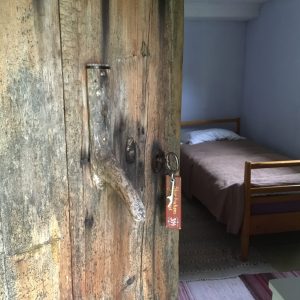
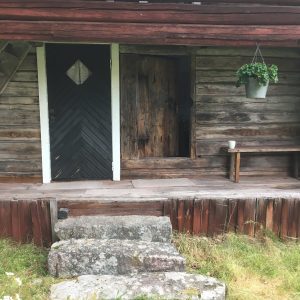
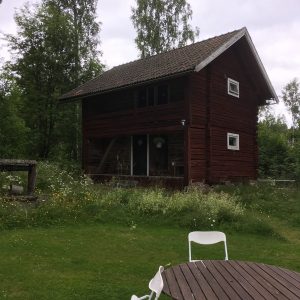 My accomodation was booked 6 months ago, there was nothing available in Vansbro even back then so I booked a place 18km out of town thinking there would be some kind of bus service or at least some other swimmers staying who I could get a lift with.
My accomodation was booked 6 months ago, there was nothing available in Vansbro even back then so I booked a place 18km out of town thinking there would be some kind of bus service or at least some other swimmers staying who I could get a lift with.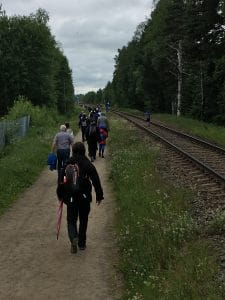
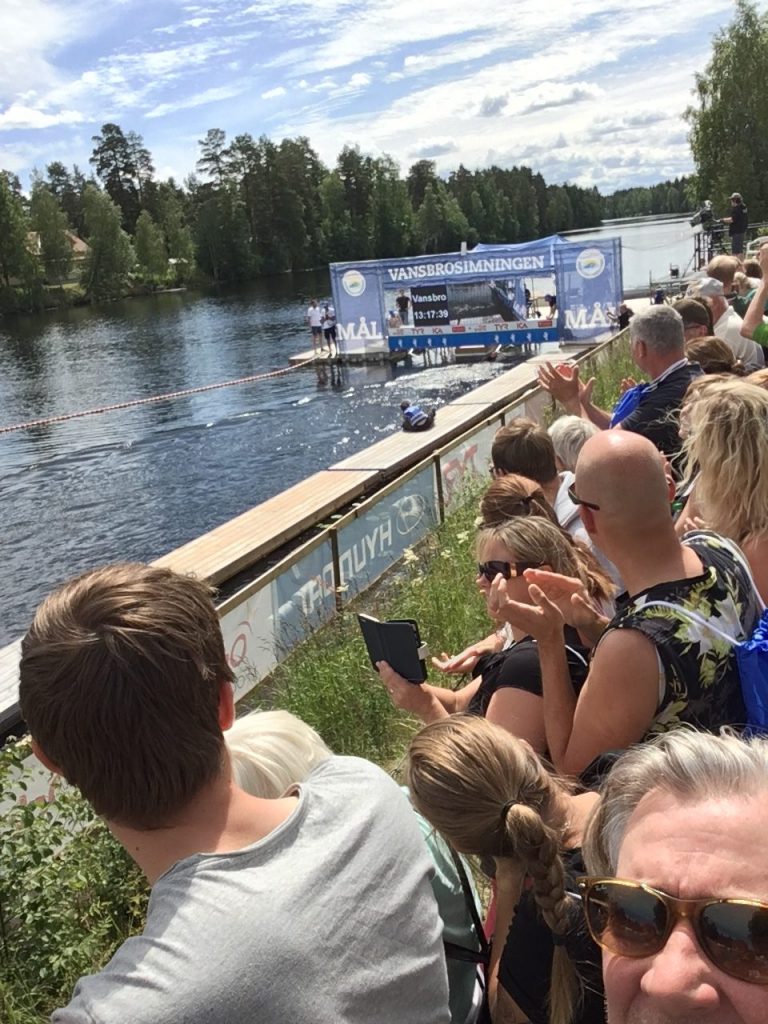
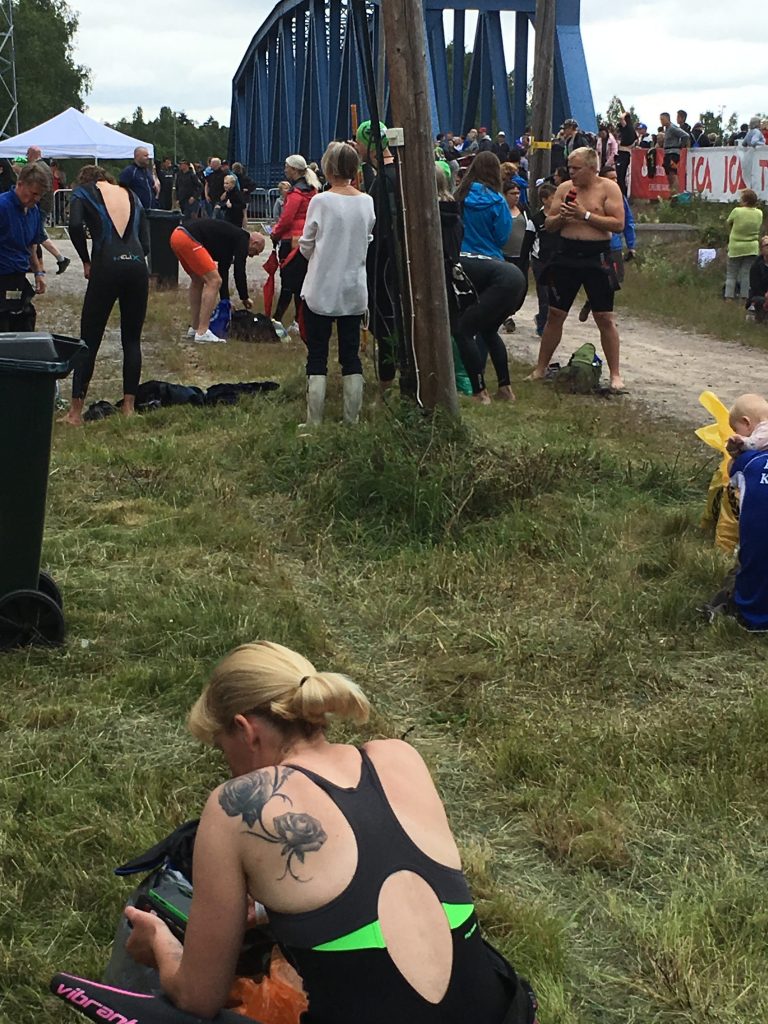 To get to the start of the swim you need to walk, it’s a track through the birch and pines alongside a railway line. They process about 6,500 swimmers that day by sending them off in waves of a hundred every 10 minutes, and each wave has a different coloured cap. My cap was pink but I never saw the gathering of ‘pink caps’ at my allocated time, only green caps. Suddenly they announced my name and country. It surprised me because the announcer had been speaking non-stop Swedish, and then I heard my name. He looked up and I waved both my arms, ‘I’m here!’ I then realised the pink caps were special entries of one some kind or another – another pink capped person had their birthday that day and they announced her too.
To get to the start of the swim you need to walk, it’s a track through the birch and pines alongside a railway line. They process about 6,500 swimmers that day by sending them off in waves of a hundred every 10 minutes, and each wave has a different coloured cap. My cap was pink but I never saw the gathering of ‘pink caps’ at my allocated time, only green caps. Suddenly they announced my name and country. It surprised me because the announcer had been speaking non-stop Swedish, and then I heard my name. He looked up and I waved both my arms, ‘I’m here!’ I then realised the pink caps were special entries of one some kind or another – another pink capped person had their birthday that day and they announced her too.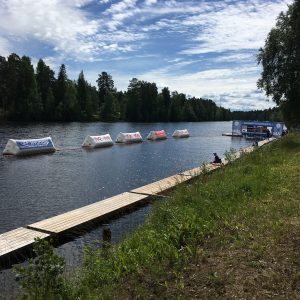
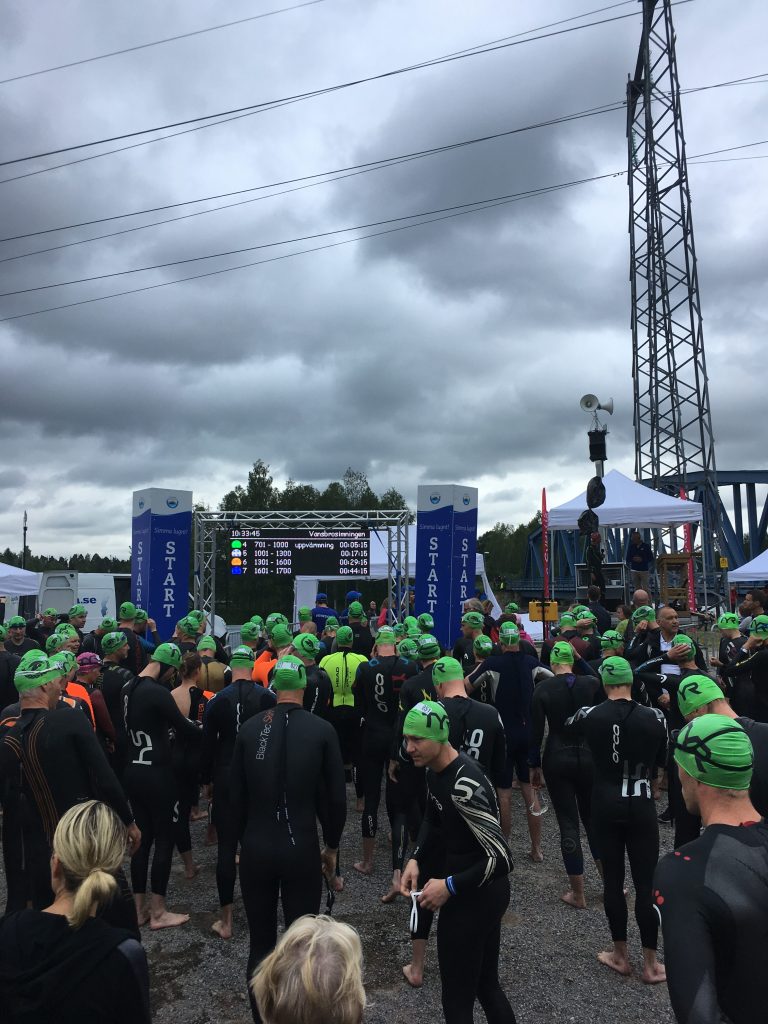
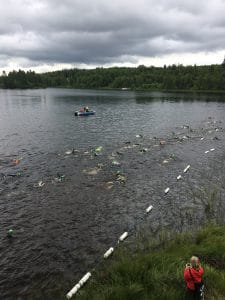
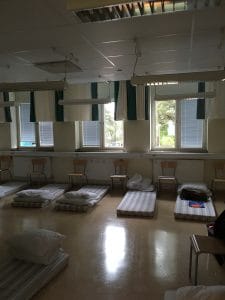 After changing at the Info Centre I went down the road to Smedbergsskolan School; a modern, clean, and again, well organised place with friendly helpful people, and was shown a room lined with fresh mattresses and new white duvees and pillows. I made my bed, lay down and fell asleep. It turned out we had only four people in our room. It was warm, dry and quiet – and, a bonus – breakfast was included in the price which was 390 krona, or about NZ$62.
After changing at the Info Centre I went down the road to Smedbergsskolan School; a modern, clean, and again, well organised place with friendly helpful people, and was shown a room lined with fresh mattresses and new white duvees and pillows. I made my bed, lay down and fell asleep. It turned out we had only four people in our room. It was warm, dry and quiet – and, a bonus – breakfast was included in the price which was 390 krona, or about NZ$62.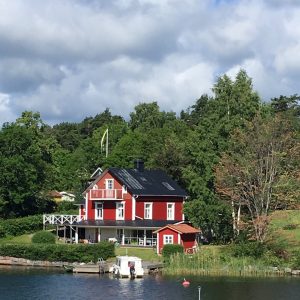


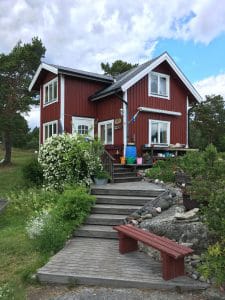
 My brother, Geoff, said New Zealanders have three ways to describe water temperature when taking a swim; “Bloody freezing, nice once you’re in, and beautiful”. It’s so true and today I’m feeling pretty proud, I swam in the Baltic Sea in the Swedish archipelago off the sland of Moja for a good 20 minutes out about 500 metres, in beautiful sunshine, which helps. Bloody freezing, but ok once you’re in.
My brother, Geoff, said New Zealanders have three ways to describe water temperature when taking a swim; “Bloody freezing, nice once you’re in, and beautiful”. It’s so true and today I’m feeling pretty proud, I swam in the Baltic Sea in the Swedish archipelago off the sland of Moja for a good 20 minutes out about 500 metres, in beautiful sunshine, which helps. Bloody freezing, but ok once you’re in.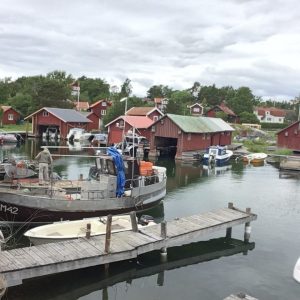 Moja is at latitude 59.4º N, that’s closer to the North Pole than the Orkney Islands above Scotland at 58º N, and to give some perspective, London is at 51º.
Moja is at latitude 59.4º N, that’s closer to the North Pole than the Orkney Islands above Scotland at 58º N, and to give some perspective, London is at 51º. The ferry stops at numerous islands very briefly to load and unload passengers. They use the front of the boat, it’s really quite clever, there’s no mooring ropes, they just bump the boat up to the jetty and pause there for a few minutes, roll a gantry out and in, then zoom off to the next island.
The ferry stops at numerous islands very briefly to load and unload passengers. They use the front of the boat, it’s really quite clever, there’s no mooring ropes, they just bump the boat up to the jetty and pause there for a few minutes, roll a gantry out and in, then zoom off to the next island.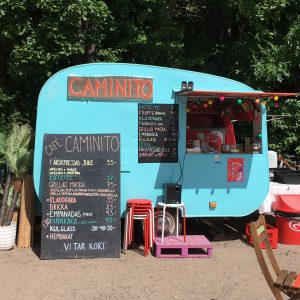
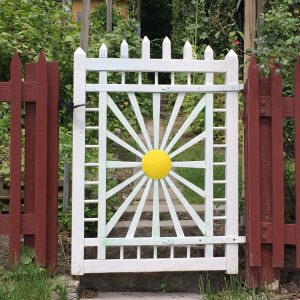
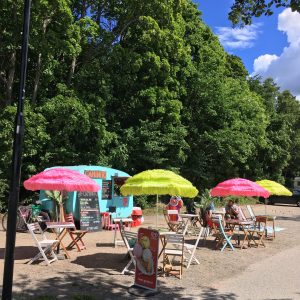


 The day before I took a bike ride all the way around Sodermalm Island, one of the main islands of Stockholm. It took about 2 hours and people were all out in the sun – there’s even a small beach and the cutest caravan cafe I’ve ever seen.
The day before I took a bike ride all the way around Sodermalm Island, one of the main islands of Stockholm. It took about 2 hours and people were all out in the sun – there’s even a small beach and the cutest caravan cafe I’ve ever seen.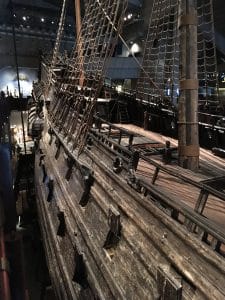 Yesterday my phone battery went flat so I had to use a paper map and it was so easy. No fiddling around zooming in and out of a tiny screen. The maps and apps on the phone are brilliant tools but they give you so much more than you really. I have trouble seeing the important icons for the things I really need like the Metro stations among the clutter of other commercial locations like restaurants and shops that fill up the screen. I have switched between Maps and Google Maps to find the best and I think Maps is the quickest but the directions are so big they take up a third of the screen – I think Maps it was made for people in cars. Google Maps has more stuff but sometimes it’s far too much stuff. When you select a route in Google Maps it puts a dotted line right over the name of the street you need to go down and you spend so much time zooming in and out trying to read it. Finding where all the dropped pins are is a hassle. The phoneis an amazing asset in these unknown cities but you still need to flip over to other apps to see the metro map or the bus and train routes – flip, flip, fiddle, faddle – it was a such a nice break air to use a regular paper map – at a single glance I could see where I was, the direction I wanted to go and the all the nearest metro stops – and I could scribble on it. I was brought up using paper maps, from ordinance survey maps to the A-Z of London that I knew inside out – it was nice to use some old skills. In fact, I’ve now decided to best and most fun way to get around Stockholm is on a bike with a paper map.
Yesterday my phone battery went flat so I had to use a paper map and it was so easy. No fiddling around zooming in and out of a tiny screen. The maps and apps on the phone are brilliant tools but they give you so much more than you really. I have trouble seeing the important icons for the things I really need like the Metro stations among the clutter of other commercial locations like restaurants and shops that fill up the screen. I have switched between Maps and Google Maps to find the best and I think Maps is the quickest but the directions are so big they take up a third of the screen – I think Maps it was made for people in cars. Google Maps has more stuff but sometimes it’s far too much stuff. When you select a route in Google Maps it puts a dotted line right over the name of the street you need to go down and you spend so much time zooming in and out trying to read it. Finding where all the dropped pins are is a hassle. The phoneis an amazing asset in these unknown cities but you still need to flip over to other apps to see the metro map or the bus and train routes – flip, flip, fiddle, faddle – it was a such a nice break air to use a regular paper map – at a single glance I could see where I was, the direction I wanted to go and the all the nearest metro stops – and I could scribble on it. I was brought up using paper maps, from ordinance survey maps to the A-Z of London that I knew inside out – it was nice to use some old skills. In fact, I’ve now decided to best and most fun way to get around Stockholm is on a bike with a paper map.
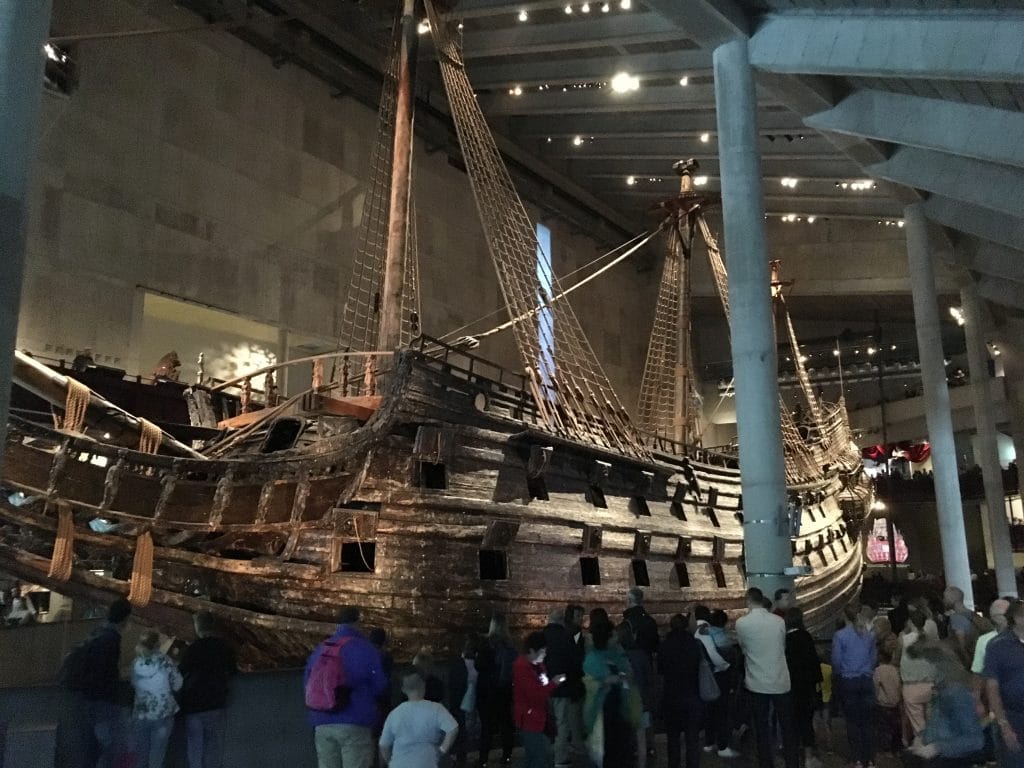

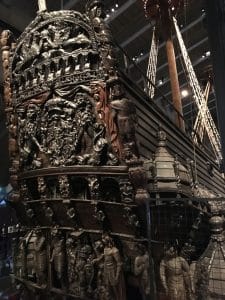
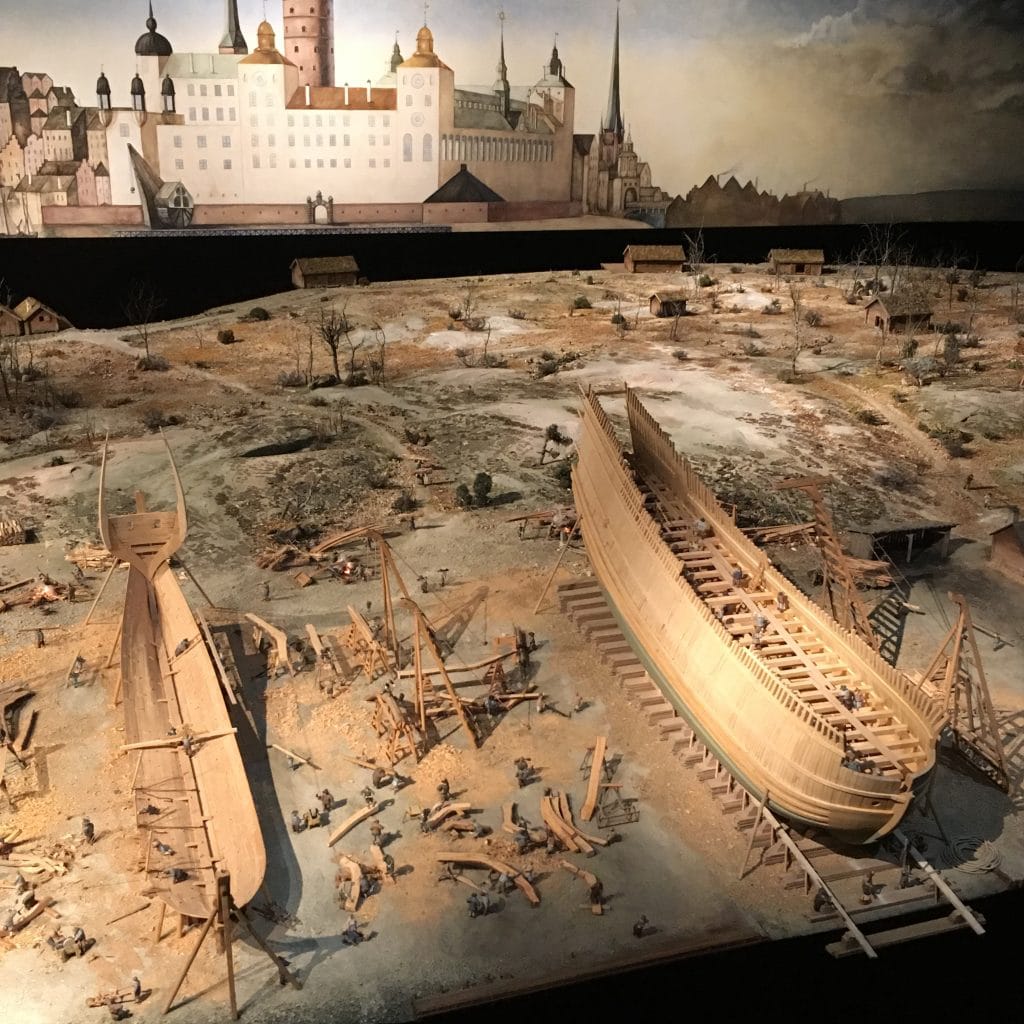

 A ferry ride took me to the Museum of Modern Art on a nearby island where, apart from the permanent exhibition, there was an exhibition of work by the architect, furniture and fabric designer Josef Frank.
A ferry ride took me to the Museum of Modern Art on a nearby island where, apart from the permanent exhibition, there was an exhibition of work by the architect, furniture and fabric designer Josef Frank.